

Dear Torah Tidbits Family Rabbi Berman Page 4 Yetziat Mitzrayim: The Ultimate Hostage Release Rabbi Baruch Taub Page 86



Dear Torah Tidbits Family Rabbi Berman Page 4 Yetziat Mitzrayim: The Ultimate Hostage Release Rabbi Baruch Taub Page 86
The economist John Kenneth Galbraith once commented that the definition of a true philosopher is someone who can defend two polar opposite theories and be comfortable with Galbraith was on to something, but he was preceded by Chazon Ish.
In a letter, Chazon Ish comments on the qualifications of a Navi. He quotes Rambam for example who states that Nevu’ah can only be received and transmitted if the prophet is b’simcha. Remarkably that means, comments Chazon Ish, that when Yirmiyahu wrote Eicha he was b’simcha! This counter-intuitive reality highlights the fact that a person has the capacity to live with two contradictory qualities and function comfortably with both of them simultaneously.
In fact a careful second chapters will reveal that standing of the path in exercising to the generally accepted this central motif is “moderation” extremely arrogant ble, but somewhere Menachem Mendel say “A horse walks not a Jew”. A proper analysis will reveal the true Golden Mean. He can also exercise humility and It is not about the middle “Deot control of one’s


SHABBAT PARSHAT TZAV: Candles 6:29 PM • Early 5:45 PM
HASEDER: Candles After: 7:44PM • Havdallah 7:45PM • Rabbeinu Tam 8:23PM
SHVII SHEL PESACH: Candles: 6:34PM • Early 5:48PM • Havdallah 7:49PM • Rabbeinu Tam 8:28PM

Aliya-by-Aliya Sedra Summary
Rabbi Reuven Tradburks
“Imagine That!”
Rabbi Dr. Tzvi Hersh Weinreb
The Thanksgiving Offering
Rabbi Lord Jonathan Sacks zt"l
Probing the Prophets
Rabbi Nachman Winkler 40 Why Is There No Blessing on the Recitation of the Haggada?
Rabbi Shalom Rosner
Matza Mindset
Rebbetzin Shira Smiles
Rabbi Sam Shor
Pesach: What is Jewish Identity? Can It Exist Without Torah and Mitzvot?
Rabbi Moshe Taragin
A Sweet Responsibility
Rebbetzin Dr. Adina Shmidman
Giving Over the Core Messages of the Seder to the Next Generation
Rebbetzin Zemira Ozarowski
Taking It to the Next Level
Rabbi Aaron Goldscheider
Taking Vacation Time on Chol Hamo’ed
82
David HaMelechA Pesach Personality
Mrs. Leah Feinberg
86 Yetziat Mitzrayim: The Ultimate Hostage Release
Rabbi Baruch Taub
90 Rich Jew, Poor Jew
Rabbi Shimon Kronenberg
92 Halachos of Erev Pesach that Falls on Shabbos
Rabbi Elyada Goldvicht
104 A Seat Around the Table Ayelet Glatt
106
108
The Y-Files Comic Netanel Epstein
Torah 4 Teens by Teens NCSY Directors, Israel
To read Rakel Berenbaum’s article visit: TorahTidbits.com > Individual Articles
Last opportunity to say Kiddush Levana until 13 Nisan/ Thurs. night April 10
This year, Thursday, April 10, is a fast day for first born males. Many congregations conduct a siyum.
Bedikat Chametz - This year will take place on Thursday evening, April 10th after dark.
‘Kol Chamira’ should be recited. We burn the chametz the next morning.
Biur Chametz - Most years, we burn the chametz on the morning of Erev Pesach.
This year we burn the chametz on the morning of Friday, April 11.
‘Kol Chamira’ is not recited and rather will be said on Shabbat morning.
Keep a 48 hour candle lit for candle lighting Saturday night
For more details and information see pages 92-98.
Please see the OU Israel Kashrut Pesach Magazine for very helpful directions and halachic guidelines.
Last time for burning chametz, Fri April 11th, Jerusalem: 11:23am (Magen Avraham); 11:36 (Gra)
Last time to eat chametz, Shabbat April 12th, Jerusalem: 10:07 (Magen Avraham); 10:31 (Gra)
Last time to annul chametz, Shabbat April 12th, Jerusalem: 11:23 (Magen Avraham); 11:35 (Gra) Afikoman must be eaten by: 12:39 am
When lighting candles for the last day of Pesach the blessing of Shehchiyanu is NOT recited.
We recite Yizkor on the last day of Pesach.
We begin the cycle of Pirkei Avot on Shabbat Shemini (First Chapter)
Yom Hashoah is observed on Wednesday night April 23, 2025 and Thursday April 24th.

COVER IMAGE Photographed by Shlomo Gherman. This photo was taken in Mea Shaarim in a special location only used for baking Matza for Pesach. I was privileged to be allowed to take photos from the beginning of the matza baking to its completion. It is fascinating to watch how much activity and cooperation is involved in the making of just one Shmura matza. Kol hakavod to all who make these very special Matzot that help enhance our Pesach experience.
Shomron
/ Zichron
Tel Aviv / Givat Shmuel
/ Kiryat Arba
/ Bikat HaYarden
Rabbeinu Tam (Jerusalem): Leil HaSeder Candles After:* 8:23 PM • Shabbat Shvii Shel Pesach: 8:28 PM *Light from a pre-existing flame ** Without candle or besamim
All Times According to MyZmanim (20 mins before Sunset in most Cities; 40 mins in Yerushalyim and Petach Tikva; 30 mins in Tzfat and Haifa)
All Times According to MyZmanim (20 mins before Sunset in most Cities; 40 mins in Yerushalyim and Petach Tikva; 30 mins in Tzfat and Haifa)
Ranges 11 days Wednesday - Shabbat
April 9 - 19 / 11 - 21 NIsan
Ranges 11 days Wed–Shabbat
Oct x–x / x–x Cheshvan
Earliest Tallit and Tefillin 5:26-5:13
Earliest Tallit and Tefillin x:xx–x:xx
Sunrise 6:17-6:06
Sof Zman Kriat Shema
Sof Zman Kriat Shema 9:29-9:22
Magen Avraham
Magen Avraham 8:52-8:44
Sof Zman Tefila 10:33-10:27 (According to the Gra and Baal HaTanya)
Sof Zman Tefila x:xx-x:xx
(According to the Gra and Baal HaTanya)
Chatzot (Halachic Noon) x:xx–x:xx
Chatzot (Halachic Noon) 12:40-12:38
Mincha Gedola (Earliest Mincha) x:xx–x:xx Plag Mincha x:xx–x:xx Sunset (Including Elevation) x:xx–x:xx
Mincha Gedola (Earliest Mincha) 1:12-1:11 Plag Mincha 5:44-5:48 Sunset (Including Elevation) 7:08-7:15
Seymour J. Abrams • Orthodox Union Jerusalem World Center • Avrom Silver Jerusalem College for Adults • Wolinetz Family Shul • Makom BaLev • Birthright • Yachad • NCSY in Israel • JLIC in Israel • Camp Dror • Pearl & Harold M. Jacobs ZULA Outreach Center • The Jack Gindi Oraita Program • OU Israel Kashrut
STUART HERSHKOWITZ, PRESIDENT OU ISRAEL Zvi Sand / Yitzchak Fund: Former Presidents, OU Israel | Rabbi Emanuel Quint z”l, Senior Vice President | Prof. Meni Koslowsky, Vice President
VAAD MEMBERS:
Michael Elman | Jonathan Eltes | Yonatan Frankel | Yitzchak Fund | Daniella Hellerstein | Stuart Hershkowitz | Jeremy Lustman | Yigal Marcus | Meir Raskas | Atara Reichel | Zvi Sand | Norman Schmutter | Mark Schneider | Esther Williams
RABBI AVI BERMAN, EXECUTIVE DIRECTOR, OU ISRAEL
David Katz, CFO, OU Israel | Natan Kandler, COO, OU Israel | Chaim Pelzner, Director of Programs, OU Israel | Rabbi Sam Shor, Director, Torah Initiatives, OU Israel | Rabbi Sholom Gold zt"l, Dean, Avrom Silver Jerusalem College for Adults 7 Hartum Street, Jerusalem, 9777507 phone: (02) 560 9100 | fax: (02) 561-7432 email: office@ouisrael.org website: www.ouisrael.org
MITCHEL R. AEDER, PRESIDENT OF THE ORTHODOX UNION Yehuda Neuberger, Chairman of the Board, Orthodox Union | Dr. Josh Penn, OU Kashrus Commission
RABBI MOSHE HAUER, EXECUTIVE VICE PRESIDENT | RABBI JOSHUA M. JOSEPH, ED.D. EXECUTIVE VICE PRESIDENT & CHIEF OPERATING OFFICER Rabbi Dr. Tzvi Hersh Weinreb, Exec. V.P. Emeritus OU KOSHER: Rabbi Menachem Genack, CEO/Rabbinic Administrator OU Kosher | Rabbi Moshe Elefant, COO/Executive Rabbinic Coordinator ISRAEL: Rabbi Yissachar Dov Krakowski, Rabbinic Administrator | Rabbi Ezra Friedman, The Gustave and Carol Jacobs Center for Kashrut Education/ Deputy Rabbinic Administrator Headquarters: 40 Rector St. 4th floor, New York, NY 10006 212-563-4000 website: www.ou.org
Editor Emeritus: Phil Chernofsky
Editor: Rabbi Aaron Goldscheider | aarong@ouisrael.org
Advertising: Ita Rochel | 02-5609125 or ttads@ouisrael.org
Website: www.torahtidbits.com
Not getting enough TTs? Too many? None at all? Contact our DISTRIBUTION 050-577-2111 • ttdist@ouisrael.org OU Kashrut NCSY Jewish Action JLIC NJCD / Yachad / Our Way OU West Coast OU Press Synagogue/Community Services OU Advocacy OU Israel
Founders and initial benefactors of the OU Israel Center: George and Ilse Falk a"h
Torah Tidbits and many of the projects of OU Israel are assisted by grants from THE JERUSALEM MUNICIPALITY

OU Israel, Torah Tidbits does not endorse the political or halachic positions of its editor, columnists or advertisers, nor guarantee the quality of advertised services or products. Nor do we endorse the kashrut of hotels, restaurants, caterers or food products that are advertised in TT (except, of course, those under OU-Israel hashgacha). Any "promises" made in ads are the sole responsibility of the advertisers and not that of OU Israel, the OU Israel Center , Torah Tidbits.

RABBI AVI BERMAN EXECUTIVE DIRECTOR, OU ISRAEL ABERMAN@OUISRAEL.ORG
Rabbi Avi Berman Executive Director, OU Israel
What is the longest Jewish holiday? Several weeks ago, I wrote here that Purim seems to be the longest holiday on the Jewish calendar, since preparations begin already from Rosh Chodesh Adar, and schools have events almost every day leading up to Purim itself. Well, it didn’t take long for the phone calls, WhatsApps and emails to start coming in (and even people stopping me on the street!) to tell me that no, Purim is not the longest holiday - Pesach is.
First off, they argued, many start to clean their houses right after Purim, fully a month away from Pesach, and some people do it even earlier than that. Second, if we judge the length of a holiday based on children and their schools, then we should consider how schools have so many days off in Israel for Pesach vacation. Lastly, a few people pointed out to me that Pesach has a special mitzvah
May the Torah learning from this issue of Torah Tidbits be
Manasseh z”l
On her third Yahrzeit
Greatly missed by her children, grandchildren and great-grandchildren
Families Ross, Miller, Lipnick & Manasseh
to prepare thirty days in advance by starting to learn the laws of Pesach. Included in this learning, the Shabbat before Pesach is called “Shabbat HaGadol,” and the Rabbi of the community typically gives a long lecture about Pesach, its themes and laws, to prepare people for the holiday. Some even have the custom to read the Haggadah on Shabbat HaGadol to prepare for the seder.
Truth be told, I couldn’t really disagree on these points. Given the fact that I have a wonderful family that likes planning in advance and starts cleaning early, we definitely feel Pesach in our house way in advance.
That being said, there is a strange phenomenon every year around Pesach that many people feel. In most cases, preparing in advance should lead to an organized and calm process. Here at the OU, we plan many of our programs well in advance, whether it be tiyulim, events, shiurim, or our summer camps, leading to beautifully planned and executed programs, baruch Hashem. Yet, when it comes to Pesach, despite preparing in advance as many of us do, we often still feel that last-minute pressure. It almost seems like no matter how far in advance we prepare, it is never enough. Many people seem to arrive at the seder exhausted after so much activity.
This phenomenon is a shame because it can affect our ability to do a special mitzvah of the night. One of the main mitzvot is “higadeta levincha,” teaching your children the Pesach story. It is so much harder to fulfill this mitzvah when one is tired and mentally drained.
A person could be drinking four cups of wine, eating multiple kezaytim of matzah, maror, charoset, and all the while worrying how he is going to be able to give over to his children, his grandchildren, and all his guests, the feeling that they are literally leaving mitzrayim and thanking HaKadosh Baruch Hu for the incredible miracles the Jewish people have experienced.
Perhaps this is the bracha of how Pesach falls out this year, on motzei Shabbat. Once Shabbat comes in, we can recover a bit from all the pressure of the preparations. With all the cleaning and cooking basically done, Shabbat is a time when we can hopefully rest, learn, and prepare ourselves without a tremendous amount of lachatz. A Shabbat of calm before Pesach is a wonderful thing to have.
It means that we will be able to focus a lot more on the chinuch of our children, grandchildren, nieces and nephews and friends’ children. When it comes to chinuch, Chazal teach us, for example, that we should get “klayot ve’egozim”, roasted nuts, to keep the children engaged at the seder. Today, we probably need to look at other treats and shtick to keep the kids excited and awake and asking questions. But the point is, Chazal were thinking of different ways to make sure that we are focusing on the chinuch element of the seder, and they really help. My family purchases OU-certified little chocolates that are individually wrapped, and the children know that every time they ask or answer a question, they get one of these chocolates. It adds to their excitement for the seder night. While there is already excitement surrounding the matzah, maror, and all the other mitzvot they have been learning about, there is no doubt that these little chocolates
that we added at our seder have added a tremendous amount of excitement for our children, and help fulfill Chazal’s directive of chinuch at the seder.
When I think of how important those simple chocolates are in my family for the seder night, I realize that those who say that Pesach is the longest holiday are right, because I can see how much time and effort the OU puts in to make a truly kosher Pesach for everyone. We are kashering factories throughout the year to produce Pesach products, with over 195 factories across Israel, as well as hundreds of others around the world. All of OU Israel programs ran special Pre-Pesach events. Beyond that, we have been busy making podcasts about Pesach in order to help people prepare. I did an episode with Rabbi Ezra Friedman, and another with Rabbi Yissachar Dov Krakowski, under the banner of the Gustave & Carol Jacobs Center for Kashrut Education. We also published our annual OU Israel Pesach Guide, distributing over 35,000 copies across the country. And, of course, we produce the Torah Tidbits’s special issue for Pesach. (Note: You can view the podcasts on www.youtube.com/@theouisrael and download a digital version of our Pesach Guide at www.ou.org.)
May the Torah learned in this Torah Tidbits be
Mark Jay Steiner
On his 5th yahrzeit -
The Steiner, Shuchman and Zommer families
I also want to highlight our OU Israel Teen Centers, which have been working with the welfare departments of the local municipalities to have teens come and help poor families in their respective cities before Pesach with painting, refurbishing, installing new appliances, and so on. It’s really beautiful seeing teens, who often have difficult family lives, getting together to help families who have even more difficult situations. By turning from receivers to givers, it really influences them and their mindset.
Since we are investing so much time, effort, money, and passion into Pesach, let’s ensure we can fulfill the key mitzvot of the Seder - sippur Yetziat Mitzrayim and ve’higadeta levincha with the right headspace to pass on our love for Torah, Hashem’s miracles, and the mitzvah of chinuch. This year has such an advantage - let Shabbat be a time to think, rest, and learn, with the result of making the seder more meaningful and exciting than ever.
Wishing you all an uplifting and inspiring Shabbat and a Chag Kasher ve’Sameach,

Rabbi Avi Berman
Executive Director, OU Israel aberman@ouisrael.org
May the Torah learned in this Torah Tidbits
David Ira Lerner z”l on his 2nd yahrzeit -
Esther Lerner and Family






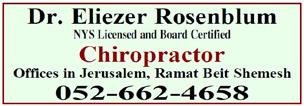
















OU EXECUTIVE VICE PRESIDENT
The Daf Yomi will begin studying Makkos this Thursday, days before Pesach, and conclude three weeks later, two days after Yom Hazikaron is observed. I plan to dedicate my own daf yomi shiur and personal learning during this period to the soldiers of Tzahal killed in battle. I hope you will consider doing the same for your Torah learning. Let me tell you why.
Shortly after Major Dr. Moshe Leiter was killed in battle in Gaza in November 2023, I had the privilege to sit with his father Yechiel, who was since appointed Israel’s Ambassador to the United States. He noted how we tend to bandy about the term ”mesirut nefesh”, using it anytime someone extends themselves a bit, whether traveling a long distance to a friend’s wedding, changing a stranger’s tire, or staying
after an event to clean up. Moshe hy”d had chosen to literally give his life for and to the Jewish people. He and all his fellow soldiers represent the true meaning of mesirut nefesh and that term should be reserved for them.
He is right.
Akeidat Yitzchak, the binding (and offering) of Yitzchak, is the original Torah story of mesirut nefesh. While Yitzchak survived the experience, our Sages taught us that his readiness to give his life always remains in the forefront of Hashem’s awareness, afro shel Yitzchak tzavur umunach lefanav, and we as Yitzchak’s descendants call upon Hashem to remember it as a merit for us every Rosh Hashana. Yitzchak’s unconditional commitment to give his life for God is remembered and enduring.
From his Wife, Children, Grandchildren and Great Grandchildren
This should guide us to do the same on our part for Moshe hy”d and his fellow soldiers. Their readiness to sacrifice everything for their people is astounding not only to us; as Rav Chaim Shmulevitz noted based on Bava Basra 10b, it entitles them – like Yitzchak - to an exclusive and vaunted place before God in the World to Come. We who have not fought, who do not regularly say goodbye to our families wondering if it will be the last time, must remember with humility, gratitude,
is reluctant to send Yishmael away and Yitzchak seeks reconciliation with Yishmael and seeks to bless Esav.

6th Aliya (25:1-11) Avraham marries Keturah; they have 6 sons. All that Avraham has goes to Yitzchak; these are sent eastward with gifts. Avraham dies at age 175; he is buried by Yitzchak and Yishmael in Ma’arat Hamachpelah. Yitzchak is blessed by G-d: he lives in Beer L’chai Roi. The transition from Avraham to Yitzchak is complete. While G-d has been a silent partner in this parsha, here He completes the generational transfer – He blesses Yitzchak. The Jewish people will be Yitzchak and not Yishmael.



7th Aliya (25:12-18) The generations of Yishmael are enumerated. Yishmael dies. His descendants dwell from Egypt to Assyria. Yishmael’s story is brief. He has numerous and powerful offspring. The brevity

the Jewish length. echoes tions woman and began father’s that his icant the
BY RABBI
R av, Beit Knesset
When Avraham addresses the people of Cheit, trying to “Ger V’Toshav Anochi Eimachem” (23:4) “A Stranger and This seems to be a contradiction. If one is a stranger than is no longer a stranger. What did Avraham mean?

from you a korban, from the animals, from the sheep and from the cattle you shall offer your korban.” Rabbeinu Bachye (Vayikra 1:2) read this verse as implying that the person’s desire was to offer himself to God, but the Torah enjoins him to preserve his life and instead sacrifice an animal. When we read these ideas each year, they are abstract concepts, food for the learner’s and worshipper’s
Makkos begins on Thursday, April 10, the day of the Taanit Bechorim, and concludes on May 2, 4 Iyar, the day usually observed as Yom Hazikaron.
The Magid of Dubno (Jacob ben Wolf Kranz 1741-1804) this tense situation in order to, both, state his truth and be said, on the one hand, “I am a Resident’ due to G-d’s promise need your agreement to purchase a plot. In other words, Avraham “strangers”, while they understood him as saying that “they”
The peace was kept, and Avraham remained true to his Shabbat Shalom




our exclusive sea-front properties had only been proven to be an excellent investment - only 15% down



our properties were only 30 minutes to the airport and 1 hour to Jerusalem
our properties were only to earn about 3.5% rental money while you’re away
our properties were only offering very favorable mortgages and extremely solid bank guarantees
our properties were only seaside apartments of 2, 3, 4 or 5 rooms, some with a health club and pool
Ashkelon Properties was only managed by David Zwebner who is a licensed real estate professional with over 50 years of experience
it would be enough it would be enough it would be enough it would be enough it would be enough it would be enough

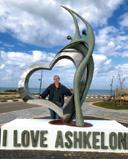


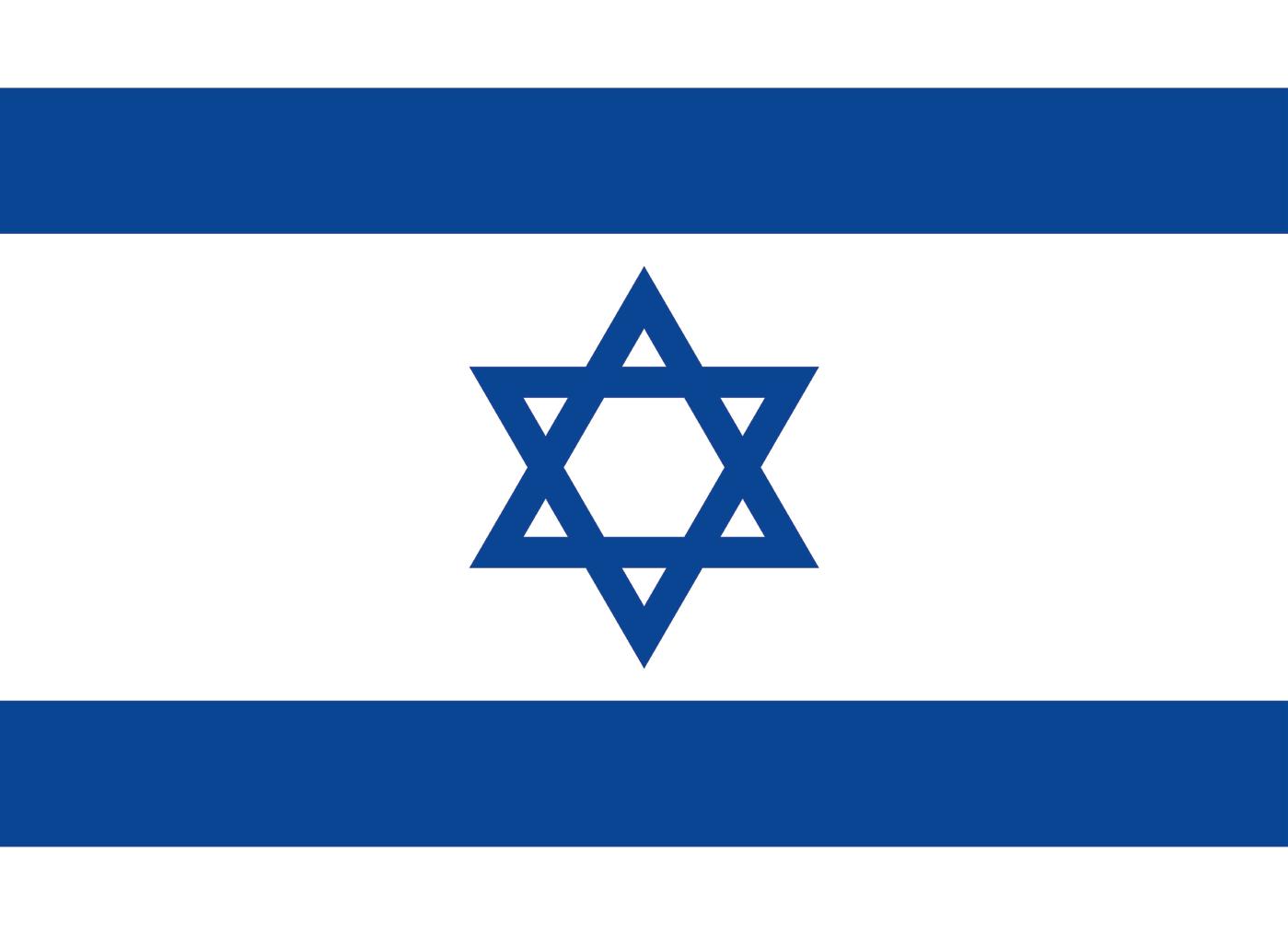


The Sara Blaustein I”HD Yom Hazikaron Ceremony
The Michael Levin Base is honored to present the largest English speaking ceremony in Jerusalem for
TUE, APR 29, 2025 | AMMUNITION HILL, JERUSALEM | DOORS OPEN AT 17:30
SEATING AT 19:00, CEREMONY AND SIREN AT 20:00
Michael Oren, Honorary board member and former Israeli Ambassador to the United States, Rabbi Moshe Scheiner , Palm Beach Synagogue, United States
Limor Rom, Mother of Yonatan Rom I”HD, Dina Guedalia, Mother of Yosef Guedalia I”HD, Iris Haim, Mother of Yotam Haim I”HD
Performance by the IDF Rabbinical Choir, and musical presentation by The Michael Levin Base Ensemble IDF Paratroopers Flag March - Torch Lighting Ceremony Kaddish - Kel Moleh - Hatikvah
Sign up here: www.causematch.com/tmlb-yomhazikaron2025
This evening is made possible in part by a generous donation from Anne and Arthur Gober Scan here to purchase tickets:
TICKETS: 75/150 NIS
For more information regarding transportation or group tickets, info@thebase.org.il

and our next step will be to plant a fruit tree. I never thought of myself as being the agricultural type, but the feeling of settling and planting a portion of Eretz Yisrael, has been truly euphoric. Iy”H, when we plant our tree, and eat the fruits that will grow one day, I think we will be able to truly appreciate that unique Kedusha found in the fruit of Eretz Yisrael!
RARe & UniqUe in the heARt of YeMin MoShe, JeRUSALeM
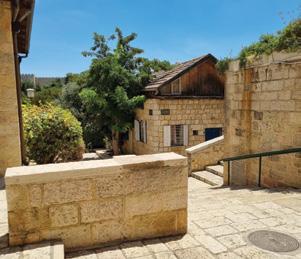
For Sale
To conclude, when you buy your Tu B'shvat fruit this year, don’t search for those dried apricots and banana chips imported from Turkey. Rather, head over to the fresh produce and buy yourself some nice juicy Kedusha-filled Jaffa oranges and thank Hashem for bringing you to this land in order to be able to הבוטמ עבשלו הירפמ לוכאל, imbibing that Kedusha in every bite that you take!!
2.5-room apartment, authentic building, arched windows, easy access from parking (no steps!), convenient & efficient design, near green parks, synagogues, the Cinematheque, the Khan Theatre, The Old City, The 1st Station & Mamilla shopping & entertainment centers, major luxury hotels & more
Galila Aizner 053-4872545
0536642512
Office 077-9968746 | www.anglo-saxon.co.il
3 Moshe Hess St., Jerusalem 0778038511
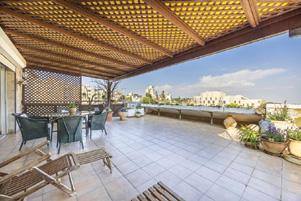

On classic & pastoral Hovevei Zion St., a rare spacious and well designed penthouse, 103 sqm + a beautiful huge 71 sqm open terrace, magnificent views, full of character, high ceilings, arched windows, 2 en-suite bedrooms, elevator, private parking. Near synagogues, Yemin Moshe, major Hotels, theaters, parks, Old City & Kotel,




Aliya-by-Aliya
ALIYA-BY-ALIYA
Sedra Summary
Rabbi Reuven Tradburks
RABBI REUVEN TRADBURKS
RCA Israel Region
RCA ISRAEL REGION
In memory of Evelyn Rivers a”h
Mother of Reuven Tradburks
Parshat Tzav is mostly focused on the role and benefits to the Kohanim in offerings.
The Kohanim are the religious functionaries. The Talmud debates: are the Kohanim our representatives or are they representing G-d?
We understand the need to have Kohanim; they will be experts in performing the offerings. And it is only proper that they should receive benefits for the work they do, as all religious functionaries are supported by the community.
But doesn’t having a privileged class of people invite corruption? We need the Kohen to offer our offerings. That gives them immediate power over us. The Kohanim have ample opportunity to use this power imbalance to their advantage; if we want their assistance, well, pay for it.
Care must be exercised in who is granted
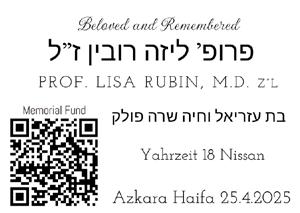
the privilege of the office of the Kohen. And care must be given to outline not only what benefits do accrue to the Kohen in exchange for their public service; but also, the limits to what they receive.
In telling us the benefits that the Kohen receives, the Torah is implicitly telling us “This. And no more.”
And having a class of people who serve also prevents competition for that position. There is no vying for the position of Kohen. You are either born into it or not. Religious office is hence above competition. But don’t let that position as Kohen go to your head.
Our parsha addresses both these themes. First, what the Kohen receives (and hence, what not). And second, an elaborate inauguration ceremony to impress on the Kohanim that they are servants, not lords. Serving G-d and His people, not assuming positions of power and privilege.
6:1-11)
Instructions are given to the Kohanim: The Olah fats and limbs are burnt all night. In the morning the Kohen shall take some of the ashes from the altar and place them at the side. This pile of ashes is removed out of the Mikdash. A fire for the offerings is to burn constantly. When a Mincha flour offering is brought, part is burned on the altar, the remainder eaten by the Kohanim. It may not be chametz.
This section outlines the benefits given to the Kohen. We begin with the Olah, the offering that is completely burned. The Kohen
gets nothing.
If we wanted to offer the mood that the sacrifice expresses, an offering that is totally burned expresses submission. I am giving it all on the altar. Submission is a core element of religious life. I submit to G-d’s Will. I recoil. As a servant, a servant of Hashem.
2ND ALIYA (6:12-7:10)
An inauguration Mincha flour offering is brought by a Kohen on the first day of his service, by a Kohen Gadol on the first day of his service and daily by the Kohen Gadol. It is boiled, then baked and completely burned. When a Chatat, a sin offering, is brought, it is consumed by the Kohanim in the Temple. The utensils used to cook it must be kashered; while a metal utensil can be put in water, an earthenware one must be broken. An Asham guilt offering is also consumed by the Kohanim in the Temple. For an Olah, the Kohen receives the leather. The Kohen consumes baked Mincha offerings.
Some offerings are completely burned, but most have part burned and the rest eaten by the Kohen. When and where the Kohen or owner consumes the offering varies according to the offering. The “kodesh kodashim – the holiest of holy” offerings are consumed in the Temple grounds itself. That includes the Olah, the Chatat and the Asham. These all are offerings brought to express a submission to G-d; the owner does not consume any of it, has no personal pleasure in it. An Olah is completely burned, save the leather, which is given to the Kohanim.
3RD ALIYA (7:11-38)
When a Shlamim, a peace offering is brought to express thanks, 4 different types of 10 mincha breads each
are brought. One of each of these 4 types is given to the Kohen. The owner consumes the offering over 2 days. He may not be Tameh, impure. Blood and the offered fats may never be eaten. The Kohen is given the breast and thigh of the shlamim offering.
The Shlamim is eaten by the owner. It is not restricted to the Temple; it may be eaten anywhere in Yerushalayim (or before Yerushalayim within eyesight of the Mikdash). And, the owner has 2 days to consume it.
The Shlamim is associated with joy, satisfaction, thanks. And it has 40 breads. That is a lot. It would seem that built in to an offering of joy is sharing. True simcha is engendered by sharing. We derive pleasure from consumption. But pleasure is not simcha. Simcha is deeper. Simcha is the deep pleasure of standing before G-d, living a life of meaning. And sharing.
4TH ALIYA (8:1-13)
Moshe is instructed to inaugurate the Kohanim. Moshe gathered the people and the Kohanim, pronouncing that the following has been commanded by G-d. Moshe dresses Aharon in the garments of the Kohen Gadol. With the anointing oil he anointed the Mishkan, the altar, and Aharon. He dressed the Kohanim in the Kohen garments, as commanded by G-d.
The instructions for inaugurating the Kohanim were given in Parshat Tetzaveh; the inauguration occurs here. The last 4 aliyot of this parsha all end with the same phrase: as G-d commanded. Perhaps this is to avoid accusations of nepotism. Moshe is not appointing his brother Aharon as Kohen Gadol in the way politicians hand out jobs to family and supporters. Moshe was commanded.
This phrase is also foreshadowing. Next parsha Nadav and Avihu will do something they were not commanded, a noteworthy departure from all the loyalty of Moshe and Aharon.
5TH ALIYA (8:14-21)
Moshe brings the inauguration offerings. The Kohanim place their hands on the Chatat, the sin offering. Moshe offers it; the blood is placed on the altar, the fats burned, the animal burned outside the camp. The ram as an Olah is offered; the Kohanim place their hands on the head, Moshe does all of the procedures for its offering.
Moshe acts as the Kohen for the entire inauguration ceremony. He does the slaughter, the sprinkling of the blood, and the offering of the fats. Perhaps this too is to bolster Aharon as Kohen Gadol. Moshe himself could act as the Kohen Gadol. In fact, for this week he does. But he is charged to transfer that role to others, to divest. Aharon is the Kohen Gadol by Divine fiat.
6TH ALIYA (8:22-29)
The second ram, the Inauguration Ram is brought. Moshe places its blood on Aharon’s right ear, right thumb and right big toe. And does the same for all the Kohanim. He offers the ram, sprinkling its blood and burning its fats. After Aharon and the Kohanim wave the matzot, one of each kind is offered on the altar. Moshe waved the breast, his portion in the offering.
With this offering, the position as official Kohanim of the Jewish people is inaugurated. There are no other Jews, as far as I am aware, who can trace their lineage as far back as Kohanim and Leviim. A Levi today descends from Levi, the son of Yaakov. And a Kohen
descends from Aharon, brother of Moshe. That Kohen status begins at this moment in the desert, one year after the exodus from Egypt and continues, unbroken, until today.
7TH ALIYA (8:30-36)
Moshe instructs Aharon to cook the meat of the offering and to consume it and the matza. The Kohanim are not to leave the Mikdash for 7 days. This same procedure is to be done when gaining atonement. Aharon and the Kohanim did all that G-d commanded.
Our Parsha outlined some of the benefits to the Kohen, due to his holy service. Support of clergy, or spiritual workers, or ritual leaders is a universal notion, crossing cultures and religions. Our Kohanim are no different in receiving such benefits. However, far more important is not what they receive, but what they do not.
Back in the Yosef story we are told how the Kohanim in Egypt, the Egyptian clergy were treated. They received public support of food. They had land. All of the land of Egypt was taken by Paro in payment for the food during the famine; save the land of the priests. The wealthiest people in Egypt were the priests. In our time, the wealth of the Vatican is vast. Our Kohanim, in contrast, have no land. They receive support, albeit modest. This is another instance of the Torah’s moderation; supporting the Kohanim, though modestly. The King will receive similar instructions; benefits but with limits. Leadership is serving G-d and His people, not self serving. When reading the Torah, we need to notice not only what is said but what is not said; what rights are given, but more importantly what rights are not given. The Kohanim receive; but modestly.
be in loving memory and
our dear parents whose yahrtzeits are in Kislev
been memorialized in a popular song, "An eternal
Doris Weinberger a"h
Max Weinberger z”l
Greatly missed by their children, grandchildren and great grandchildren
Rav Aryeh and Dvora Weinberger
Bernie and Leah Weinberger Menachem and Hannah Katten
Patience is necessary for those who follow Isaac's way. But a wise woman taught us that patience is but another name for hope. That woman was Jane Austen, who put these words into the mouth of one of the characters in her great novel, Sense and Sensibility: "Know your own happiness. You want nothing but patience—or give it a more fascinating name: call it hope."
In observance of the Shloshim of our friend Yehuda Leib Berren z"l
Rav Menachem Weinberg will give a shiur in his memory "Heroic Joy"
Monday evening, 23 November/ 8 Kislev 7:30pm
Zoom Meeting: 853 8980 1519
Password: Yehuda


shmuelnathan4@gmail.com




ALIYA-BY-ALIYA
Aliya-by-Aliya Sedra Summary
RABBI REUVEN TRADBURKS
Rabbi Reuven Tradburks
RCA Israel Region
RCA ISRAEL REGION
In memory of Evelyn Rivers a”h
Mother of Reuven Tradburks
1ST ALIYA (EXODUS 12:21-24)
Offer the Pesach offering, place its blood on the doorposts and remain indoors ‘til the morning. For G-d will pass over the homes identified with the blood and your firstborn will be spared. This law is eternal.
The simplicity of this narrative belies its drama. Take the Pesach, offer it; and they did. The willingness of the people to be defiant of Egypt, to slaughter its god (the lamb) is striking. The slave people listened to their G-d regardless of the risk from their overseers.
And this is the first act of loyalty demanded of the Jewish people by G-d. All of the Torah has been G-d’s promises to us. Now he asks for our hand to be stretched to Him in return. The Holy One could have redeemed us, could have passed over our homes without the blood on the doorposts. But He wanted us to stretch our hand to Him.
2ND ALIYA (12:25-28)
When you enter the land and your children ask you what this service is, you will answer that this is a Pesach, as Hashem passed over our homes. The people did as Moshe commanded. These simple verses are as dramatic as
the first. “When you enter the land”? What? Slaves are being told to keep this mitzvah when they enter the land? The land of Israel is the farthest thing from their minds, mired in slavery. From the dawn of our history, we have fantastic dreams and visions of the future, ignoring the grimness of the reality of the moment.
3RD ALIYA (12:29-36)
At midnight all the first born in Egypt are killed. Paro orders Moshe and Aharon to leave and take all the people to their festival and to bless him as well. The Egyptians urged the Jews to leave quickly. The Jewish people took unrisen dough and gold, silver and clothing from the Egyptians.
While the buildup to this moment took many months, the redemption occurs in a flash. Out. Now.
Even the Jews, knowing they are going to be redeemed that night are unprepared for the moment. Even when we know the moment is coming, that anticipation tempers not the astonishment of the moment. They had not prepared provisions. Faithful they were; prepared, not.
4TH ALIYA (12:37-42)
The people left, including 600,000 of military age, many others who joined, and laden with flocks. The dough was baked hastily as they were expelled in haste. The Jews lived in Egypt 430 years; they departed after exactly 430 years. This day that G-d anticipated for
their departure remains a noted day for Jews forever.
The Torah emphasizes that this was the day destined from the start for the redemp tion. From our perspective the redemption was sudden; we were unprepared. But from His perspective, this was in the cards the whole time. He anticipated it before it hap pened; we mark that day after it happened.
ALIYA (12:43-51)

The Pesach Offering: non-Jews may not participate, must be eaten in one home, may not be taken out of the home, no bone may be broken, all Jews par ticipate. One who joins the Jewish people and is circumcised may join the Pesach; there is one law for all. On that day G-d took the Jewish people out of Egypt.
The law that the Pesach may not be taken out of the home sounds an awful lot like the laws that korbanot cannot be taken out of the Mikdash. Our homes become the Mikdash on the Seder night.


Circumcision and the Pesach are 2 sides of the same coin – Brit Milah is a sign of the covenant with G-d, while Pesach is our yearly renewal of dedication to that covenant.
1ST ALIYA (EXODUS 13:17-19)
The people traveled away from Egypt toward the sea. Moshe took the bones of Yosef, as Yosef had instructed them to do.
When Yosef died, he should have done what Yaakov did. Yaakov wanted to assert that the land of Israel is our land, not Egypt, and demanded he be brought to Israel for




burial. Yosef didn’t do that. Rather Yosef commanded “when you all leave here, take my bones with you.” Wow, Yosef was mighty confident in the Divine promise of redemption. He staked his bones on it. What a powerful assertion of faith on his part. And a powerful expression of encouragement to the people: “things will get bad here in Egypt, plenty bad. But I believe in the promise made to Avraham that we will be redeemed.” And
grandmother and great-grandmother
when that happens, because I know it will, take my bones with you.
2ND ALIYA (13:20-22)
A Divine cloud guided them by day, fire by night.
The Cloud is an indication that Hashem is present; at Sinai, in the Mishkan and here.
3RD ALIYA (14:1-4)
4TH ALIYA (14:5-8)
The people camp at the sea; Paro pursues with the elite of his fighting forces.
Paro’s change of heart is a pattern; in the plagues and even after the plague of the first born.
5TH ALIYA (14:9-14)
With the sea in front of them and Paro in pursuit, the people are desperate. They question why Moshe brought them out of Egypt to die in the desert. And state: this is what we said in Egypt. We would rather remain in Egypt to live and work as slaves than leave Egypt to die in the desert. Moshe reassured them.
This is the first we hear of the reluctance of the people to leave Egypt. While the Torah tells the story of the Jewish people leaving slavery, that doesn’t mean that every Jewish person was a willing participant. Skepticism is not a modern invention; it is part of the human condition. But, while skeptical, they took their place as part of the Jewish people who were redeemed. Skeptics join the Jewish adventure of redemption, albeit skeptically.
6TH ALIYA (14:15-25)
G-d tells Moshe to march forward, raise his staff over the water, the water will split and the people will proceed through the water. Moshe does so, the sea splits, the people march through and the Egyptians pursue. By daybreak the
Egyptians are stuck in the sea, claiming G-d is fighting the battle of the Jews.
Redemption occurs with water. The first thing in creation was water; verse 2 in the Torah states G-d’s spirit hovered over the waters. Water recurs as a symbol of beginnings. The splitting of the sea and the redemption from Egypt closes a chapter of Jewish history and opens a new beginning. It is the beginning of the national march to receive the Torah and to enter the Land of Israel. A new beginning marked by water.
7TH ALIYA (14:26-15:26)
The sea waters return, drowning the Egyptians. The people sing Az Yashir, the song of thanks. Miriam leads the women in song. The journey into the desert begins.
Redemption brings song. This song creates a religious paradigm. When we are the recipients of Divine gifts, we must respond. The religious heart cannot contain itself. It needs to burst forth with song. This is reflected in our siddur as well. When we mention the exodus from Egypt in the brachot of the Shema we include that the people sang this shira. What He does must be responded to by what we do. Song.








A residential complex for people on the move
Carasso’s flagship project offers an active, dynamic, and enriching living experience in a vibrant and developing area, with a variety of opportunities and activities for everyday life and leisure.
3-5 room apartments on Derech Beit Lechem, Jerusalem
Starting from NIS 2,995,000
May your home be filled with the warmth of family, the richness of tradition, and the joy of freedom. Wishing you a Pesach of meaning, gratitude, and shared blessings!
The largest collection of exclusive Jerusalem properties is just one search away www.remaxjerusalem.com

Abu Rabi'a St. Armon Hanatziv
2BR apartment with MAMAD, Sukkah balcony, private parking! Great price & investment don’t miss out! Call now!
NIS 1,800,000

Micha Paul 052-511-6340

Olei HaGardom St. Armon Hanatziv
Prime investment! Spacious 3-bedroom, 95 sqm apartment in Jerusalem. Excellent location, perfect for young families! NIS 2,250,000 Micha Paul 052-511-6340


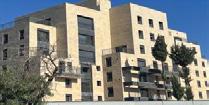
Sheshet HaYamim St
(After Tama 38) 5 rms (4 bed / 2 bath) , mamad ,2nd fl , Shabbat elev , parking , needs interior reno NIS 4,550,000
Alyssa Friedland +972-54-668-4111


Gichon St, Abu Tor

Exclusive 135 sqm duplex penthouse, 5 rooms, panoramic view, 2 balconies, private parking, boutique buildings. Must see! NIS 4,690,000 Micha Paul 052-511-6340

William Perl St. Pisgat Ze'ev

Beautiful cottage in a quiet street 135 sqm 3 levels 6 rooms + basement 125 sqm green and beautiful garden 2 parking spots Asking price 4,550,000 David Weiser 055-276-2960


Prestigious Balfour Vacation, Talbieh Mandate bldg, high ceilings, renovated (112 sqm), 2 master suites , 3 balconies, 2 private storage ,1st floor. Includes all furniture and appliances NIS 7,400,000 Alyssa Friedland +972-54-668-4111




Gedalyahu Alon St, German Colony 180 sqm charming, pent-cottage, arched windows, breathtaking green views of preserved grove. NIS 10,900,000

Orna Even Parker 054-6216069

Building for Sale at Agripas 33
Purchase Entirely/Separately! 149 sqm, 93.79 sqm apt + 97 sqm commercial property on the entrance level in the heart of Jerusalem. NIS 12.55 mil + VAT David Weiser 055-276-2960


Ibn Gvirol St, Rehavia
Best location in Rehavia, 70 sqm registered garden apt, separate connected 30 sqm unit For renovation. NIS 5,790,000

Orna Even Parker 054-6216069
UNDERGRADUATE PROGRAMS
• Business Administration
• Business & Economics (double major)
• Communications
• Computer Science (BSc)
• Economics & Entrepreneurship with Data Science (double major)
• Entrepreneurship & Business (double major)
• Entrepreneurship, BA & Computer Science, BSc (double major)
• Government
• Psychology
ONE SEMESTER / ONE YEAR /
• Counter-Terrorism & Intelligence Studies
• Diplomacy & Conflict Studies
• Financial Economics
• Human-Computer Interaction (HCI)
• Behavioral Economics
• Innovation & Entrepreneurship
• AI & Big Data
• One-Year MBA
• Healthcare Innovation
• Machine Learning & Data Science

BY RABBI DR. TZVI HERSH WEINREB OU EXECUTIVE VICE PRESIDENT, EMERITUS
BY RABBI DR. TZVI HERSH WEINREB OU EXECUTIVE VICE PRESIDENT, EMERITUS
There was a time when I would only go out of my way to listen to speakers who were older and more experienced than I. Recently, however, I have changed my preferences and have begun to seek out speakers, rabbis and teachers, who are young and relatively inexperienced. I find their ideas fresh and often very much on the mark. After all, they are in much better touch with our fast-changing world than I am.
Once, during a visit to Israel, I sat in on a series of lectures which were designed to prepare the audience for the upcoming Passover holiday. The speaker, a brilliant young rabbi, focused upon the Seder night, and particularly upon the text of the Haggadah. He spent most of his opening lecture elaborating upon what he considered the most difficult task with which we are all confronted on the
A rare opportunity in Lev Rechavia (Keren Kayemet st): � 200m, succa, 2 parking spots, 2 storage rooms, � 138m with succa, parking, storage, Shabbat elevator.
� Variety of flats in Wolfson building
first night of Passover. The task is described in the following famous passage:
“In each and every generation, a person must see himself as if he personally left Egypt. As it is written, ‘And you shall explain to your son on that day that it is because of what the Lord did for me when I went free from Egypt (Exodus 13:8).’” The requirement is explicit in the biblical text: the Lord did it for me, when I went free from Egypt.
The young rabbi candidly confessed to his audience that he had never been able to fulfill this requirement. Indeed, he didn’t think it was possible, certainly not for most of us, to envision ourselves as if we personally had experienced slavery and redemption. “This,” he insisted, “is the most difficult task we are faced with on the Seder night.”
For sale in Rechavia - SHAAREI CHESSED Rivka Talesnick (Agent): 0526969956
When I first heard this assertion, I found it to be quite provocative. I wanted to protest but maintained my silence in respect for the young rabbi. I attributed his conviction to his relative immaturity. I have never found this obligation difficult. Personally, I have found it quite easy to imagine myself as a slave and to personally exult in the emotional experiences of redemption and freedom.
I usually forget the content of most lectures that I hear almost as soon as I leave the lecture hall. This time, however, I could not rid my mind of the young rabbi’s statement. I began to question my own inner certainty. Had it really been so easy for me all these years to envision myself as one of those who had experienced both slavery
and the Exodus?
In the midst of my extended preoccupation with the young rabbi’s assertion, a long-forgotten memory suddenly surfaced in my mind. I was taken back in time to another lecture I had heard just before Passover many years ago. This time, the speaker was not a young rabbi at all. Rather, he was an old and revered Chassidic rebbe, a survivor of the Holocaust who had spent years in Auschwitz and had witnessed the vicious murder of his wife and children with his own eyes.
That old rebbe was Rabbi Yekutiel Yehudah Halberstam, may his memory be blessed, who was known as the Klausenberger Rebbe, after the small town in the Balkans where he had served prior to World War II.
In that lecture, Rabbi Halberstam recounted his own puzzlement over a lecture he had heard very long ago from one of his mentors. I no longer remember the name of that mentor, but Rabbi Halberstam was careful to identify him in detail because of the strange and almost unbelievable experience that he reported.
The mentor said that he had no difficulty at all imagining himself to have been in slavery in Egypt and to have been redeemed. In fact, this mentor reported that he could clearly remember the experience. He could recall in great detail the burdensome work he had to perform, the dirty hovel in which he was forced to live, and the sighs and groans of his companions. He could even still see, in his mind’s eye, the cruel face of his tormentors as they sadistically whipped him for not producing his daily quota of bricks.
The Klausenberger Rebbe confessed that when he first heard his mentor make those claims, he had difficulty believing them. He
thought that his mentor had made such a claim just for the effect it would have upon his listeners. He stressed that sometimes it is justified for a speaker to resort to hyperbole to make his point more dramatic and more graphic.
But then the rebbe continued to say that after many years, he had come to realize that his mentor was telling the absolute truth. “It took the experiences I had during the horrible years of the Holocaust,” he exclaimed, “for me to realize why my mentor was able to recall his experiences in ancient Egypt’s tyranny.”
The rebbe then went on to elaborate upon two psychological processes that are necessary to invoke during the Seder night as we recite the Haggadah. He used two Hebrew and Yiddish terms respectively: koach hadimyon (the power of imagination) and mitleid (empathy).
The lesson that the old Rebbe related to me and to the dozens of other eager listeners that evening so long ago was that we are often restricted by our own tendencies to rely upon our reason, rationality, and intellectuality. We underplay the powers that we have to fantasize, to imagine, to dream freely. In a sense, we are slaves to reason and need to learn to allow ourselves to go beyond reason and to give our imaginations free rein. Only then can we “see ourselves as if we had personally endured slavery.” Only by cultivating our imagery can we ourselves experience the emotions of freedom and liberty.
We are all required to imagine ourselves as if we are the other person. If the other person is poor, the mitzvah of charity demands that we ourselves feel his poverty. If he is ill, we must literally suffer along with him. This is
empathy, and to be empathic, one must rely upon a well-developed imagination.
Imagination and empathy are not words that one often hears in rabbinic sermons, but they are the words that the Klausenberger Rebbe used that evening. And, as he concluded in his remarks, he learned about those words through the bitter suffering that he endured when he was enslaved in Auschwitz, and he appreciated redemption when he himself was finally freed from his personal bondage.
The young rabbi who started my thinking about this had, through his good fortune, never really experienced anything remotely resembling slavery. Naturally, he was thus deprived of the ability to really appreciate freedom.
After a few days, I approached the young rabbi and shared with him the words that I had heard decades ago, before this young rabbi was even born. I told him what the Klausenberger Rebbe had said about empathy and imagination. The young rabbi responded politely and with gratitude, but with a gentle smile got in the last word: “But the Klausenberger Rebbe didn’t say that learning to imagine and to empathize were easy.”
I had to admit that the young rabbi was correct. Creative imagination and compassionate empathy are not easily attained. Achieving them may indeed be the hardest task of the holiday of Passover.
But I feel confident that the young rabbi agreed with my assertion: Learning to use one’s powers of imagination in order to empathize with the plight of others is the essential objective of this magnificent holiday, zman cheiruteinu, the season of our freedom.
Chag Sameach! A happy holiday!
Walking down King George St. in Jerusalem and want a cold bottle of water?
Come help yourself to a bottle at 52 King George.
In loving memory of Yoni’s wife Tziporah a"h, a true Eishes Chayil, always full of chessed, kindness and laughter, and brought life and strength to so many people, that she touched!
She was like Aron, who loved peace and pursued peace.

Yoni thanks Hashem for having the opportunity of having Tziporah in his life, to learn of her caring, patience and happiness, to overcome her challenges. May Tziporah's Neshama be a light onto the world, in a time of darkness, and may her Neshama shine to Gan Eden. Yoni misses Tziporah with tears in his eyes, as Hashem gave him a gift, a crown jewel, now he returns her to Hashem. With thanks and Toda. Love, Yoni
To help refill the supplysend tax deductible donations for Be’er Tziporah a"h Bottled Water Gemach to Chabad of RechaviaRabbi Yisroel Goldberg email Rabbi@JerusalemChabad.org 02 800-1717
www.JerusalermChabad.org/DonateShekels בוט
Flying Soon?
Travel with Confidence 1UniTravel - Medical Insurance at great prices Choose from multiple options 1unitravel.brokersnexus.com 1UniSim - Sims for USA and Worldwide Starting at $40 sales@1unisim.com Call 077-400-3199 or USA 718-715-0001
Refined Living With 5 Star Hotel Facilities

ART OF LIVING IN PRIME TALBIEH
Exquisitely furnished upscale apartments built to the highest standards
Variety of apartment sizes ranging from 170 sqm to 420 sqm | Private gardens, large sukkah terraces, unique Penthouse
Experience Luxury & Comfort with MGallery
Hotel facilities: Indoor Pool | CLARINS Spa & Fitness Center | 24/7 Security | Room Service
Chef Restaurant





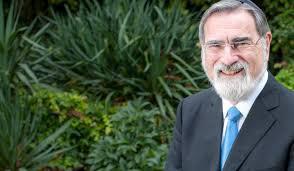
RABBI LORD JONATHAN SACKS ZT"L
LORD JONATHAN SACKS ZT"L
FORMER CHIEF RABBI OF THE UNITED HEBREW CONGREGATIONS OF THE COMMONWEALTH
FORMER CHIEF RABBI OF THE UNITED HEBREW CONGREGATIONS OF THE COMMONWEALTH
May the learning of these Divrei Torah be תמשנ יוליעל HaRav Ya'akov Zvi ben David Arieh zt"l
Among the sacrifices detailed in this week’s Parsha is the korban todah, the thanksgiving offering:
If he offers it [the sacrifice] as a thanksgiving offering, then along with this thanksgiving offering he is to offer unleavened loaves mixed with oil, unleavened wafers spread with oil, and loaves of fine flour well-kneaded and mixed with oil. (Lev. 7:12)
Though we have been without sacrifices for almost two thousand years, a trace of the thanksgiving offering survives to this day, in the form of the blessing known as Hagomel: “Who bestows good things on the unworthy”, said in the synagogue, at the time of reading of the Torah, by one who has survived a hazardous situation.
What constitutes a hazardous situation?
The Sages (Brachot 54b) found the answer in Psalm 107, a song on the theme of giving thanks, beginning with the best-known words of religious gratitude in Judaism, Hodu la-Shem ki tov, ki le-olam chasdo, “Give thanks to the Lord for His lovingkindness is forever” (Psalm 107). The psalm itself describes four specific
situations:
1. Crossing the sea: Some went out on the sea in ships; they were merchants on the mighty waters . . . They mounted up to the heavens and went down to the depths; in their peril their courage melted away . . . Then they cried out to the Lord in their trouble, and he brought them out of their distress. He stilled the storm to a whisper; the waves of the sea were hushed.
2. Crossing a desert: Some wandered in desert wastelands, finding no way to a city where they could settle. They were hungry and thirsty, and their lives ebbed away. Then they cried out to the Lord in their trouble, and he delivered them from their distress.
3. Recovery from serious illness: They loathed all foodand drew near the gates of death. Then they cried to the Lord in their trouble, and he saved them from their distress.He sent forth his word and healed them; he rescued them from the grave.
4. Release from captivity: Some sat in
darkness and the deepest gloom, prisoners suffering in iron chains...Then they cried to the Lord in their trouble, and he saved them from their distress. He brought them out of darkness and the deepest gloom and broke away their chains (Brachot 54b).
To this day, these are the situations of hazard (many nowadays include air travel as well as a sea voyage) on which we say Hagomel when we come through them safely.
In his book A Rumour of Angels, the American sociologist Peter Berger describes what he calls “signals of transcendence” - phenomena within the human situation that point to something beyond. Among them he includes humour and hope. There is nothing in nature that explains our ability to reframe painful situations in such a way that we can laugh at them; nor is there anything that can explain the human capacity to find meaning even in the depths of suffering.
These are not, in the classic sense, proofs of the existence of God, but they are experiential evidence. They tell us that we are not random concatenations of selfish genes, blindly reproducing themselves. Our bodies may be products of nature (“dust you are, and to dust you will return”), but our minds, our thoughts, our emotions - all that is meant by the word “soul” - are not. There is something within us that reaches out to something beyond us: the soul of the universe, the Divine ‘You’ to which we speak in prayer, and to which our ancestors, when the Temple stood, made their offerings.
Though Berger does not include it, one of the “signals of transcendence” is surely the instinctive human wish to give thanks. Often this is merely human. Someone has done us


Jerusalem Real Estate is My Business Eta: 054-723-3863
Amazing stand alone homes in OLD KATAMON, TALBIYA, BAKA, GERMAN COLONY
BAKA. Mini penthouse. Built 89 sqm as 2 bedrooms and 2 full bathrooms. High ceilings, amazing views outdoor space 56 sqm including pool!!! Shabbat elevator all day, 2 reg parking spaces plus storage. Living space all on one floor from elevator. Pool upstairs. Great property.
Price: 5,900,000 NIS
OLD KATAMON. 174 sqm primary residence, large garden in use, fully accessible, 4 bedrooms. Plus a studio of 19sqm. 9,500,000 NIS.
Cottage in BAKA for sale. Built 156 sqm with possibility to expand 20-30 sqm. Reg garden 48sqm plus parking. For total renovation. Call Eta for more info
180 sqm Penthouse on an exclusive street in ARNONA 40 sqm balcony, registered parking. Very high standard finish. 9,550,000 NIS
SAN SIMON. 5 apartments. Open plan kitchen. Covered parking. 2 elevators. Newly built to high standards, underground heating & AC Contact Eta for more info






Eta Morris Realty, Ltd. etamorrisrealestate@gmail.com Eta: 054-723-3863 etamorrisrealty.co.il
a favour, given us a gift, comforted us in the midst of grief, or rescued us from danger. We feel we owe them something. That ‘something’ is todah, the Hebrew word that means both ‘acknowledgement’ and ‘thanks’.
But often we sense something more. It is not just the pilot we want to thank when we land safely after a hazardous flight; not just the surgeon, when we survive an operation; not just the judge or politician when we are released from prison or captivity. It is as if some larger force was operative, as if the hand that moves the pieces on the human chessboard were thinking of us; as if heaven itself had reached down and come to our aid.
Insurance companies tend to describe natural catastrophes as “acts of God”. Human emotion does the opposite. God is in the good news, the miraculous survival, the escape from catastrophe. That instinct - to offer thanks to a force, a presence, over and above natural circumstances and human intervention - is itself a signal of transcendence. That is what was once expressed in the thanksgiving offering, and still is, in the Hagomel prayer. But it is not just by saying Hagomel that we express our thanks.
Elaine and I were on our honeymoon. It was summer, the sun was shining, the beach glorious and the sea inviting. There was just one problem. I could not swim. But as I looked at the sea, I noticed that near to the shore it was very shallow indeed. There were people several hundred yards from the beach, yet the water only came up to their knees. What could be safer, I thought, than simply to walk out into the sea and stop long before I was out of my depth. I did. I walked out several hundred yards
and, yes, the sea only came up to my knees. I turned and started walking back. To my surprise and shock, I found myself suddenly engulfed by water. Evidently, I had walked into a deep dip in the sand. I was out of my depth. I struggled to swim. I failed. This was dangerous. There was no one nearby. The people swimming were a long way away. I went under, again and again. By the fifth time, I knew I was drowning. My life was about to end. What a way - I thought - to start a honeymoon.
Of course someone did save me, otherwise I would not be writing these lines. To this day I do not know who it was: by then I was more or less unconscious. All I know is that they must have seen me struggling. They swam over, took hold of me, and brought me to safety. Since then, the words we say on waking every day have had a deep meaning for me: “I thank You, living and enduring God, for You have restored my life to me: great is Your faithfulness.” Anyone who has survived great danger knows what it is to feel, not just to be abstractly aware, that life is a gift of God, renewed daily.
The first word of this prayer, Modeh , comes from the same Hebrew root as Todah, ‘thanksgiving’. So too does the word Yehudi, ‘Jew’. We acquired the name from Jacob’s fourth son, Judah. He in turn received his name from Leah who, on his birth, said “This time I will thank [some translate it, ‘I will praise’] God” (Gen. 29:35).
To be a Jew is to offer thanks. That is the meaning of our name and the constitutive gesture of our faith.
There were Jews who, after the Holocaust, sought to define Jewish identity in terms of suffering, victimhood, survival. One
theologian spoke of a 614th commandment: You shall not give Hitler a posthumous victory. The historian Salo Baron called this the ‘lachrymose’ reading of history: a story written in tears. I, for one, cannot agree. Yes, there is Jewish suffering. Yet had this been all, Jews would not have done what in fact most did: hand on their identity to their children as their most precious legacy. To be a Jew is to feel a sense of gratitude; to see life itself as a gift; to be able to live through suffering without being defined by it; to give hope the victory over fear. To be a Jew is to offer thanks.
These weekly teachings from Rabbi Sacks zt”l are part of his ‘Covenant & Conversation’ series on the weekly Torah teaching. With thanks to the Schimmel Family for their generous sponsorship, dedicated in loving memory of Harry (Chaim) Schimmel. Visit www.RabbiSacks.org for more.
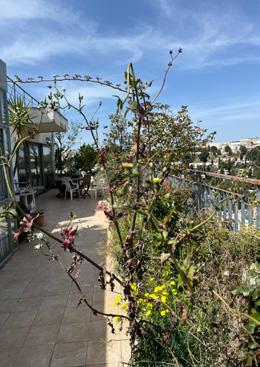

Trusted US/Israeli tax services for over 30 years
• U.S. & Israeli Tax Returns and Planning
• U.S. & Israeli Corporate Tax Returns and Planning
• U.S. & Israeli Tax Returns and Planning
• U.S. & Israeli Bookkeeping & Accounting Services
• U.S. & Israeli Corporate Tax Returns and Planning
• U.S. & Israeli Retirement and Benefits Consulting
• U.S. & Israeli Bookkeeping & Accounting Services
• IRS and Israeli Tax Authority Audit Representation
• U.S. & Israeli Retirement and Benefits Consulting
• IRS Streamlined Filing Program
• IRS and Israeli Tax Authority Audit Representation
• Estate and Trust Tax Planning
• IRS Streamlined Filing Program
• Foreign Bank Reports (FBAR)
• U.S. Child Credit
• Estate and Trust Tax Planning
• Foreign Bank Reports (FBAR)
• Other Accounting Services
• U.S. Child Credit
• Other Accounting Services
It’s never too late to file prior years’ taxreturns!
Please contact us: 02-999-2104 | 09-746-0623 |03-527-3254 | 052-274-9999
Email: alan@ardcpa.com www.ardcpa.com Trusted US/Israeli tax services for over 30 years It’s never too late to file prior years’ taxreturns! Trusted US/Israeli tax services for over 30 years
Email: alan@ardcpa.com www.ardcpa.com
Please contact us: 02-999-2104 | 09-746-0623 |03-527-3254 | 052-274-9999

Prime Location in the German Colony HaTzfira Street
For Sale: Ben Maimon, 4 rooms, 113m, 2 bathrooms, porch, 1st floor, elevator, 6.2 million NIS
A boutique Tama 38 project set to be completed within 36 months, offering an exceptional living experience in one of Jerusalem’s most desirable neighborhoods. Highlights Include: � Spacious 3 and 4-room apartments, all with Sukkah balconies and storage � A luxurious penthouse with nice space and terraces. � Private parking and high finishes. � Ideally located close to cafes, shops, and cultural attractions.
Smadar 050-3114040 // 02-642-4329 smadi_bida@walla.co.il

For more details, please contact Trust Real Estate Smadar - 050-3114040
Flawless finishes that add elegance to any space. Wall & Ceiling repairsSmoothing, Straightening, and perfecting every surface. Spackling & Prep Work- Because the foundation matters.


MINI PESACH FESTIVAL April 14-17 10:00-12:30 (Details on the Train Theater web site...)
And... on Tuesday April 15th only Special…ARTS & CRAFTS FAIR 10:00-18:00
Tables with handmade goods: ceramics, jewelry, organic cosmetics, mezuzahs, flowered treasures and more.
In cooperation with Chaya’s Place Inquiries: 050-9290770 10:00-18:00
Liberty Bell Park 7 Derech Beit Lechem
Lovely grassy picnic areas too.




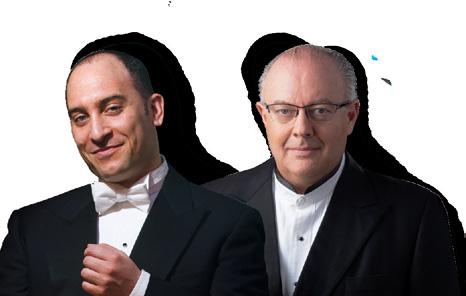




CITY CENTER
In the heart of calm and pastoral BAKAPrivate arab house, 6 rooms, 500m + possibility of building 250m, huge garden, approx. 700m, completely renovated, underfloor heating + a/c, large parking, 5 bathrooms, 5 toilets, green
2 rooms, Savyon view, luxurious, furnished, Shabbat elevator, concierge
2.890.000 NIS MENDEL 052-8980111
MENDEL 0528980111
BAKA - 2 apartments sit on top of each other, 5/3 rooms + studio, separate entrance, balconies
9.800.000 NIS MICHAEL 052-3202488
MEKOR CHAIM
BAKA - New penthouse, 4 rooms in a small luxurious building with character, alone upstairs, 3rd floor + elevator, 4 orientations, 3 toilets, 2 bathrooms, terrace / sukkah, 70m, parking, store-room
Beginning of the street, spacious 4 rooms, Succah porch, parking, storeroom
5450000 NIS MENDEL 052-8980111
4.850.000 NIS MICHAEL 052-3202488
MOSHAVA / In a building after TAMA 38, new apartment, 4 rooms, 3rd floor + elevator, balcony/partial sukah, opened sight, 2 bathrooms, calm, parking
BAKA - Caspi street, penthouse, 180m + 40m terrace, Old City view, parking
9.550.000 NIS MICHAEL 052-3202488
GERMAN COLONY
MENDEL 052-8980111
Garden apartment, 110m + 370m garden, storeroom, parking
8.500.000 NIS MENDEL 052-8980111
BAKA / MEKOR HAIM - 4 rooms, 90m, 2nd floor + elevator, completely renovated, fireplace, a/c, gas heating, very central, close to all amenities
MENDEL 052-8980111
Do you have a life insurance policy you:
• No longer want?
• No longer need?
• Can no longer afford the premium?
• Could you use extra money instead of keeping your policy?
I can guarantee that if you qualify with the underwriting process I can get you more money than if you cash it in with the company.
Please contact Moshe Russell at: Buymypolicy32@gmail.com
Looking for an expedited Endocrinology appointment?
Near Arnona Hatzaira, in a step building, very large 5-room apartment + balcony/sukkah, 40m, renovated, 3rd floor, private entrance, quiet, potential for extra independent unit
MICHAEL 052-3202488

ARNONA – 3 rooms, that will be transformed to 90m, 3rd floor with elevator, store-room, parking
trained Endocrinologist US and Israel Certified
ONLY 2550000 NIS
MICHAEL 052-3202488

• Diabetes
In the pastoral BAKA - quiet and central, stunning villa 350m, in a magical atmosphere, designed, pool, 4 bedrooms, cinema room and more, 4 bathrooms, garden, parking
• Weight loss and Obesity
• Thyroid disease / Cancer
MIKAEL 052-3202488
• Osteoporosis and Menopause
appointment! Raphael Hulkower, MD

• Pituitary, parathyroid (calcium) and adrenal disease
ARNONA HATZEIRA - Very spacious penthouse, 120m, 4th floor + elevator, huge terrace / succah, 75m, open view, 2 parking spaces, cellar, 3 toilets, quiet, completely renovated, immediate entrance
• Hypogonadism (low testosterone)
MICHAEL 052- 3202488
In person 03-5117466 Sharap Plus, Kfar Sava Via Zoom 055-500-3342 HulkowerMD@gmail.com



BY RABBI NACHMAN (NEIL) WINKLER FACULTY, OU ISRAEL CENTER
Over these many years, I have always understood this week’s haftarah selection from the final chapter in the book of the final navi, Malachi, to be based upon the vision of a future redemption. Chazal chose to have this perek read on the Shabbat before Pesach as a reminder that the holiday of Pesach is to be seen as more than just a reminder of past events and even a reenactment of those events. Rather, the Yom Tov must be regarded as an eternal “Chag HaGeula”, celebrating our redemption(s) as well as our not-yet-realized future redemption.
In fact, the order of Seder reflects this very idea. The practices we follow and the text we recite before the Seder meal are all based upon our past redemption from Egypt. The bitter maror that brings to mind the bitter slavery in Egypt, the salt water representing the tears of suffering and the charoset symbolizing the mortar used for the brick, all relate back to our slave experience. Likewise, the recitation of “Avadim Hayinu” and “Met’chila Ovdei Avoda Zarah” fulfill Talmud’s insistence of beginning the Magid section with “g’nut”, the shame we suffered during our Egyptian enslavement. Even the Hallel that we begin reciting before the meal is known as Hallel HaMitzri,” the Egyptian Hallel, and we end that pre-meal section with the verses that refer to Egypt and our release
from slavery.
In contrast, the post-meal Seder practices and recitations rely heavily upon our vision of the future redemption. It is during this time, therefore, that we drink the fourth cup of wine, a cup introducing our prayers for the geula to come. It is at this point that we ask Hashem to punish those who deny His existence and oppress His people, as we open the door for Eliyahu HaNavi, the future harbinger of the messianic era, as related to us by the navi Malachi in the haftarah we read on this Shabbat HaGadol.
We continue the recitation of Hallel HaMitzri by completing its final part, which makes no mention of Egypt or our enslavement. We then praise Hashem with the Hallel HaGadol, the great Hallel as praise for G-d for our future geula. It is no wonder then that, as we conclude this final section, we pray that Hashem will bring us, redeemed, to Tziyon in song, as we declare: “L’shana Haba’ah Berushalyim.”
Our haftarah, however, does not, at first glance, reflect the joy of redemption. In fact, much of the selection is filled with Malachi’s criticism of the nation, including a litany of their sins and misdeeds over the years. It would appear that only the final psukim, with their mention of the arrival of Eliya(hu) HaNavi, make a direct connection to the
future for which we yearn.
I believe, however, that one verse in the middle of our haftarah reflects a crucial pre-Pesach message that reverberated over the years to our oppressed nation and speaks to us today as well. “Ki Ani Hashem-lo shaniti”-“For I, Hashem, have not changed,” I am as I was; I am still a righteous judge Who demands obedience to His laws and I am the One who will punish the evildoers. But G-d continues by reminding Israel, “V’atem bnei Ya’akov lo chlitem,”-“You, descendants of Jacob, have not perished”, reminding the nation that, despite the sins that the haftarah detailed, despite your failure to live up to standards set by the Torah and despite that you have been punished by G-d for those misdeeds….you are still here. The eternity of G-d and the eternity of Israel remain.
Years ago, when Jews sat down to their Seder reeling from edicts, attacks and murders, they had little to celebrate and little reason to believe in a future redemption. And so, on Shabbat HaGadol they read these words of Malachi. You have sinned, Hashem does punish and yet…..you’re still here. Your geula is guaranteed as is your national survival. And so, even whn we remember our suffering in Egypt and beyond but we can still cry out: “L’shana Haba’ah Berushalyim.” Not as a prayer nor as a dream, but as a confident proclamation that “Next year we WILL be in Yerushalayim”, a rebuilt and renewed Yerushalayim, in a restored Jewish State and as a redeemed people!!!
Rabbi Winkler’s popular Jewish History lectures can be viewed by visiting the OU Israel Video archive: https://www.ouisrael.org/video-l ibrary



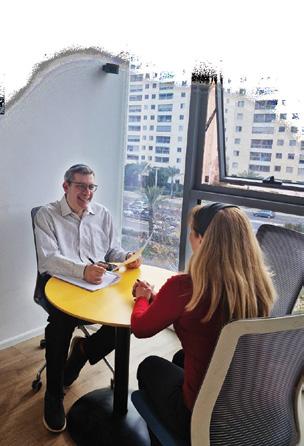
When American citizens pass away in Israel, IRS procedures can delay their beneficiaries from accessing US-based assets (real estate, bank accounts, stock, pensions, etc.)
The tax experts at MASAMERICA help families navigate these processes, working with financial institutions to release assets faster.
Unlike basic tax preparers, MASAMERICA’s US tax lawyers and CPAs have over a century of combined IRS experience. Let our expertise reduce your taxes and prevent future issues.

Rabbi Shalom
Why is it that we do not recite a bracha on the recitation of the Haggada? After all, the recitation of the Haggada is the way we fulfill the mitzva of sippur yetzi’at Mitzrayim, and we usually recite a Birchat HaMitzva prior to the performance of a mitzva.
We will suggest six explanations: Kiddush: This is recited at the beginning of the Seder, and it includes a reference to the holiday, and also serves as the blessing on sippur yetzi’at Mitzrayim (Rif, quoted in Sefer Abudraham).
The Bracha of Asher Ge’alanu: This references the salvation that is recited later in the Haggada and thus serves as the blessing over Sippur Yetzi’at Mitzrayim (Shibolei HaLeket). But there is a problem with this: The bracha appears much later, after we have already spent over an hour engaging in sippur yetzi’at Mitzrayim. We should have recited the bracha earlier in the Seder, based on the general rule of over le’asiyatan that requires us to recite a blessing immediately
preceding the performance of the mitzva!
Perhaps we can suggest that since we are supposed to feel as if we are experiencing the Exodus for the first time, our status is similar to a convert. Our nation was formed this very evening, and we are thus evolving throughout the night. A convert does not recite a bracha until after he immerses in a mikve, even though typically blessings are recited prior to the performance of a mitzva. This is due to the fact that one cannot recite a bracha before becoming a Jew. Similarly, we cannot recite a bracha at the beginning of the Seder because we first have to experience the process of becoming a nation.
Birkhot HaTorah: The Ponovitcher Rav suggests that since sippur is a form of Talmud Torah, it is connected to the Birchat HaTorah which we recited earlier in the day in our morning prayers.
Infinite: One recites a bracha only on a mitzva with a finite requirement. Since there is no shiur (limit) or any way to quantify this mitzva, no bracha is recited. Kol hamarbeh lesaper hareh zeh meshubah. The more one retells the story, the more one is praise- worthy (Abudraham).
Spontaneous Praise: It is preferable to
engage in sippur and express our gratitude to Hashem for our Exodus from Egypt in an authentic manner rather than out of an obligation. For example, if a child recites a blessing of baruch ata…al mitzvat kibud av before bringing a parent a drink of water, the parent could be upset that the child is acting out of the obligation of kibud rather than out of love. We do not recite a blessing prior to fulfilling the mitzva of kibud av va’eim because it would be formalizing it, making it seem that we do not respect our parents out of love and appreciation. It is a similar idea with sippur yetzi’at Mitzrayim.
Hashem took us out of Egypt. He saved us from slavery and potential total annihilation. Wouldn’t it be natural to recall such an event out of appreciation? Making a bracha would dilute the natural outpouring of emotion that one should experience when recalling such a meaningful and remarkable event. For the same reason, we do not preface the recitation of Hallel at the Seder with a bracha. This reflects a natural instinct to offer praise and joy for having experienced the Exodus.
Bracha on a Bracha: The Netivot (Rav Yaakov MiLisa) suggests that one does not recite a bracha on a bracha or on a mitzva performed in the context of reciting a bracha. Since the Haggada is already structured within four other brachot, there is no need to introduce it with a blessing. For the same reason, we don’t recite a bracha on Birchat HaMazon (which is a biblical obligation) because it in itself is a bracha.


Live in a Historical Home in Ein Kerem for a Great Price!
Beautiful duplex apartment in the heart of Ein Kerem, 125 sqm, 4.5 rms, 1.5 baths, large rooms with domed ceilings, balcony with view over the neighborhood, close to shops, cafes and public transportation, well maintained condition, lots of potential!
Priced to Sell: NIS 3,650,000
Investment Opportunity in Armon Hanetziv!
3 room apt, 65 sqm, floor -2, balcony overlooking the park, quiet, bright, 3 air directions, for renovation.
Asking price only NIS 1,650,000 This is an opportunity not to be missed!!
Seder night is such a special opportunity to share inspirational ideas with the family. May we be able to spike everyone’s curiosity and properly transmit our rich tradition. Ilana Nelson








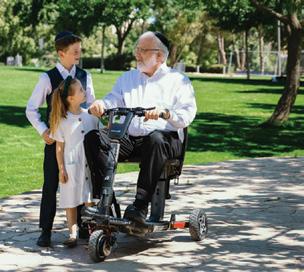
SHABBATTO scooter offers a "Mehudar" Zomet-approved Shabbat mechanism that operates according to the "Existing Current Modulation" principle. The Shabbat mechanism is pre-installed and does not require expensive fitting.



Your next home in Jerusalem?


Arnona 7,800,000 NIS
Garden apt, 175 sqm, garden 190 sqm
Namhum 050-7225694
Herzog Street 2,650,000NIS
4R, 65 sqm, 1st floor small yard, fully accessible
Orit 050-3362306

Rasco 4,200,000 NIS

Arnona 3,990,000 NIS
Garden apt, 75 sqm, garden 95 sqm
Nahum 050-7225694
5R, 110 sqm, view, Sukka balcony, elevator
Rachela 052-6503348
gilinski@017.net.il


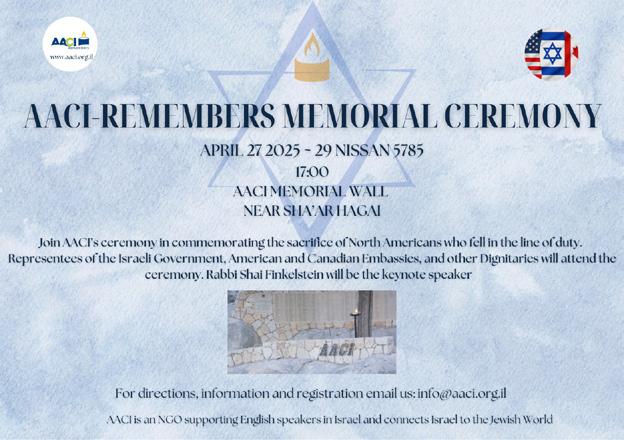
Faculty, OU Israel Center
Undoubtedly, the richest, most significant symbol of Seder night is the matzah. We follow the transformation of matzah from “lechem oni,” termed the bread of “affliction,” representing the bread the Jewish slaves ate in Egypt, to become the bread of freedom that did not have time to rise because the Jews left their bondage in haste. Let us explore some impactful lessons that we can apply personally as we eat our matzah on Seder night.
The commentators grapple with an obvious question. Why didn’t their bread rise on their journey from Mitzrayim? The Ba’al HaTanya offers a fascinating explanation. Similar to Matan Torah when the world stood still and silent, the revelation of Hashem’s Glory on the night of Yetziat Mitzrayim was so overwhelming that even
Attached Cottage, 250 Sq. Mtr. Four Storeys, Front and Back Garden, Spacious Kitchen
Asking 4.35 Million Shekel
For more info contact Benjie: 0544-882194 Chag Sameach
inanimate objects and natural entities halted and stood in awe of the incredible event. It was only when they reached Sukkot that they were then able to bake their unleavened bread. When we look at the matzah on Seder night and contemplate all it represents, we are struck by the intensity of Hashem’s revelation when the Jews left Egypt and it allows us to tap into this powerful energy.
Chametz, as we are aware, represents the phenomenon of process, of cause and effect. We combine ingredients and expect them to react in a specific way to produce the desired result. Chametz reflects the dimension of natural systems that conceal Hashem’s involvement. Rav Chayim Friedlander zt”l in Siftei Chayim, explains that matzah, made in a short amount of time, reflects the dimension beyond time. At the time our nationhood was established and formed, the injunction not to eat chametz reminds us not to be lulled into a mindset in which we think that things operate according to laws of nature without the direct intervention of Hashem. Matzah is referred to as the ‘bread of emunah,’ a powerful reminder that Hashem is in charge of everything. Indeed, the matzah is uncovered throughout most of Seder night as it and by extension, we, absorb the words of the haggadah, the words of emunah. Our goal is to become a matzah, to learn how to relinquish control and embody emunah. On another level, chametz and matzah
reflect the conflicting character of a human being. Chametz represents arrogance and egocentricity, while matzah represents humility and acceptance of Hashem’s dominion. Rav Schorr in Lema’an Tesaper poignantly notes that Adam Harishon was created from the dust of the ground and ‘kneaded’ with water, thus he is referred to as “chalato shel olam, bread of the earth.” Each person can see himself as the raw material of dust and water; we can choose to become chametz or matzah.
As we recount the awesome miracles and feel Hashem’s closeness on Seder night, we are gifted with an opportunity to embrace the matzah mindset. We can each recreate ourselves as a matzah and humbly recognize how Hashem is orchestrating our lives with an outpouring of His love.



Executive Director, Camp HASC
Author of Baderech: Along the Path of Teshuva (Mosaica 2021)
Mischel
EXECUTIVE DIRECTOR, CAMP HASC
AUTHOR OF BADERECH SERIES
In a small village near the town of Kolbisov there lived a simple Jew who made his living from the kretchma, the little inn that he rented from the local poritz. Down on his luck, the Yid was unable to make his monthly payments, and the poritz, a brutal and unforgiving landlord, resorted to violence to extract the debt. Try as he may, the Yid just couldn’t come up with the money he owed. After missing the payment deadline, a bunch of goons showed up at his door on Shabbos morning just days before Pesach to ‘send a message’ to the poor fellow. As the Yid stood at a safe distance, they tore apart the humble building, smashed the modest possessions and dumped all his Shabbos food on the ground. “If you don’t pay up by tonight,” they hissed, “we’ll do the same stuff to you.”
The Yid was extremely dismayed and ran to the beis medrash, now his only refuge in the world. Exhausted, he squeezed into a corner in the back of the beis medrash, which was at the moment packed with congregants listening to the Shabbos HaGadol d’rashah of the Rav of Kolbisov, the “Oheiv Yisrael”, Rebbe Avraham Yehoshua Heschel.
“There are two kinds of brachos addressing the redemption of Am Yisrael,” intoned the Rebbe. “One of them we say before the Amidah. This is in the past tense, praising the Gaal Yisrael, ‘Hashem, Who redeemed Israel’. The
other berachah is part of the Amidah itself, composed in present tense: Go’el Yisrael, ‘He Who redeems Israel’. The first berachah is a reference to the past geulah from Mitzrayim. The second berachah, however, is in the present tense, because it refers to the redemption that is going on right now, right here, in this very moment, for every single one of us…. And even a Yid who can’t pay his rent, and the poritz is breathing down his neck threatening him, and his house was torn apart and he has not a kopek to begin paying his debts — Go’el Yisrael! The Ribbono shel Olam is redeeming him right now from all of his tzaros! Even this Yid is going out of exile, at this very moment!”
No one present could have recognized the hashgacha pratis of the Rebbe’s choice of words except our innkeeper, who was certain that this was Hashem speaking through the Rebbe directly to him. This Divine intervention filled him with hope and joy, and he ran out of shul dancing wildly and shouting, “The Rebbe says Go’el Yisrael, He Who redeems Israel right now! Go’el Yisrael! Hashem is saving even me — even me — at this very moment!”
As he was dancing his way down the street toward his home, he bumped right into the poritz, who was out for a walk with his wife. “Ew,” he grimaced toward his wife, “this is the dirty Jew we roughed up today, he owes us a ton of money.” But as the poritz watched him dancing away, laughing and shouting a Hebrew phrase, his wife frowned and clucked
disapprovingly at him. “No. It looks like the poor guy is having a breakdown. He must have cracked from all your pressure and your little band of thugs. Have mercy on this zhid, he is so pitiful....”
“Okay, Okay,” demurred the poritz, rolling his eyes. “Jew! Come back over here. I have something to tell you.” The Yid still couldn’t keep his explosive joy completely under wraps but he turned around and came back. The poritz thought for a second and said, “I’ll tell you what we’ll do. I’ll speak with my brother who owns the distillery in Kolbasov. They’ll give you some whiskey on credit. You could sell it; maybe your luck will change, and with the profit, you can pay off the debt you owe me.”
Indeed, within the few days between Shabbos and Erev Pesach, the Yid sold so much whiskey that he was able not only to pay the rent he owed to the poritz, but to purchase all his Yom Tov needs and even help some of his struggling neighbors as well.
On Erev Pesach, still with a dance in his step, the Yid went to Reb Avraham Yehoshua to tell him the good news. Before he could speak, the Rebbe smiled and said, “May the One Who is redeeming Israel right now bless you with a joyous Zeman Ge’ulaseinu, the Season of Our Ge’ulah!”

• 8 Bedrooms
• 2 Kitchens
• 6 Bathrooms
• Basement
• Mamad
• Inner courtyard 40 m2
• Built area 366 m2
• Lot size 778 m2
• Parking for 2 cars
• Close to Shuls, beaches
8,500,000 NIS
Stephen Epstein Realtor
“All of the blessings above and below are dependent upon the Seventh Day.” (Zohar, Yisro)
Pesach draws its sanctity from the Shabbos that precedes it, Shabbos HaGadol. This day is called “the Great Shabbos” because it contains within it the holiness of Shabbos as well as the sanctity of the upcoming Yom Tov.
On this great Shabbos, in preparation for
the Korban Pesach and in anticipation of impending redemption, our Mothers and Fathers rose up in faith and defiance against their tormentors, publicly tying lambs, an Egyptian deity, to their bedposts. The blessings of Shabbos HaGadol and the days before Pesach give us another chance to believe in Hashem’s salvation and to begin again. With emunah and confidence in Hashem’s plan, we can be filled with joy, even if our external circumstances are excruciatingly difficult. For Hashem is certainly the Go’el Yisrael, in the present tense, redeeming even us, right now.
Excerpted from newly published Haggadah Baderech: Along the Path of Redemption
To find out more about Rabbi Mischel’s book ‘Baderech Haggadah’, visit: www.judahmischel.com/baderech-book






YOU ARE INVITED TO A PRIVATE EVENT EXPLORING THE BEST OF ISRAELI REAL ESTATE IN THE MOST POPULAR ANGLO COMMUNITIES. ESTATE IN
Venue: Rehavia, Jerusalem, 10:30 AM (address will be given on registration)








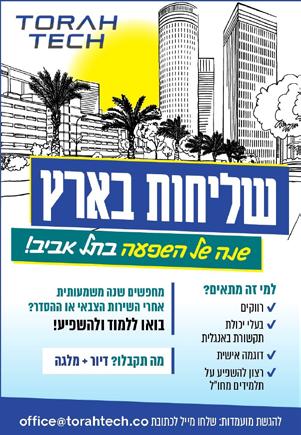




simchat shmuel
BY RABBI SAM SHOR DIRECTOR, TORAH INITIATIVES, OU ISRAEL
BY RABBI SAM SHOR Program Director, OU Israel Center
One of the interesting customs of the Layl HaSeder, is the custom for the middle matza to be broken, and for the larger half to be hidden away and set aside for later in the night to be consumed as the Afikoman. Customs around the afikoman vary, though they often share the common purpose of keeping children awake and alert during the Seder until the afikoman is eaten. Following Ashkenazi custom, the head of household may hide the afikoman for the children to find and then hold for ransom, or alternatively, the children may steal the afikoman and ransom it back.
There is an incredible explanation for this custom offered by the Rebbe of Dzhikov zy’a, who points to a verse in Parshat Toldot, as the possible source for this custom.
Parshat Toldot includes the challenging episode of Rivka Imeinu, disguising her son Yaakov as his older brother Eisav, in order to seemingly deceive an elderly and frail Yitzchak to bestow upon Yaakov, the blessings of the first born. What is the significance of this troubling episode? How
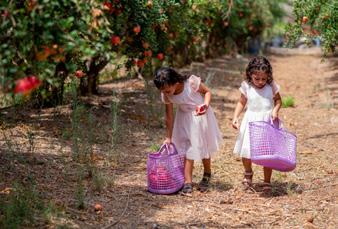


could it be that Yaakov Avinu would come to receive these blessings in such a way? How could it be that Rivka would facilitate this entire episode?
In the subsequent pesukim , Eisav approaches his father, having prepared his favorite foods, in anticipation that his father will indeed bless him, he is shocked to hear Yitzchak’s reply:
“Ba Achicha B’Mirma, vayikach birchatecha-” Your Brother came cunningly, and took your blessing. “
The Ateret Yehoshua of Dzhikov, zy’a offers a fascinating insight- the word B’mirma is equal in numerical value to the word afikoman.
When Eisav approaches his father with this meal, Yitzchak answers him that it is Pesach night, and I have already eaten a meal which your brother served me, which included the Afikoman- I therefore am no longer allowed to eat from your meal, as one is prohibited to eat any additional food on Pesach night, once they have consumed the Afikoman.
This novel approach of course takes into account the midrashic suggestion that each of the Avot fulfilled the entire Torah through ruach hakodesh, even though they had not received the Torah and were not commanded to do so.
Rabbi Moshe Weinberger, shlita points out that on the Seder night, the matza which is set aside as the Afikoman, is one half of the matza which is broken for Yachatz,
at the beginning of the Seder. Yachatz, as explained by Rabbi Weinberger, is an acronym for the words: Yadav, Chelkat Tzavarav- his hands and the smooth of his neck- a reference to the parts of Yaakov’s body, which Rivka covered with fur to disguise him as Eisav!
So what are we to learn from both this episode of disguise and deception, as well as its connection to the Afikoman of Layl HaSeder?
As mentioned above, many have the custom that the Afikoman is hidden for the children to find, or to take it and “steal it” in exchange for a finder’s fee or present upon its return. Rabbi Weinberger points out that there is an important message hidden within this custom. Yaakov Avinu, the ultimate Ish Emet, did not feel it was right for him to receive the blessing, he was not the bechor and therefore did not see himself as deserving to be blessed accordingly.
So too, many of us may feel that we are unworthy or not deserving to learn the depths of Torah, to delve into penimiut hatorah- the inner secrets of Torah. Rabbi Weinberger suggests that on the Layl HaSeder, we too must step out of our comfort zone like Yaakov Avinu and hide, or steal the Afikoman, to realize that yes we too, are worthy to learn the secrets of Torah.
In truth, this beautiful teaching is an important message not only for the Layl HaSeder, but for the entire year. We should all be open, and blessed to realize that each of us is indeed worthy to delve into the depth and inner meaning of Torah, and to find chizuk and joy in exploring the beauty of Penimut HaTorah.
Chag Kasher V’Sameach!






Sign up for the OU daily sefirah reminder email @ www.ou.org/sefirah
Sefirah is the counting of seven complete weeks from the second evening of Pesach until Shavuot. The count, which takes place after night fall for the following day, is preceded by the blessing only if done in the evening and no days have been missed in the count.
Visit www.ou.org/sefirah to receive an email reminder to count each day. Emails are pre-programmed to go out on each of the 49 days of the Omer to help make sure you don’t forget to count!

NOTE: IF YOU FORGET TO COUNT AT NIGHT, YOU MAY COUNT ALL OF THE NEXT DAY – BUT WITHOUT A BLESSING YOU MAY RESUME COUNTING THE NEXT EVENING WITH A BLESSING.























PLEASE NOTE UPCOMING TORAH TIDBITS ADVERTISING DEADLINES
ISSUE 1609 (APRIL 25-26)
Deadline for ads: Sunday April 20th
ISSUE 1610 (MAY 2-3):
Deadline for ads: Thursday, April 24th
For advertising information call or email Ita Rochel 02-560-9125 | ttads@ouisrael.org
The entire Torah Tidbits Distribution Team heartily thanks all of our volunteer members all over Israel who do a wonderful job of transporting and distributing this OU publication 50 times a Year!
Chag
Kosher V’Sameach!
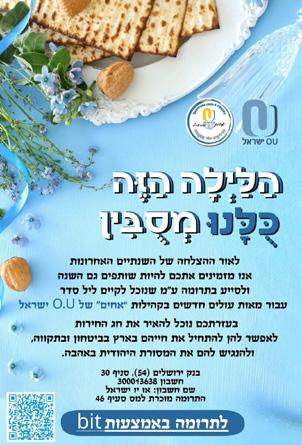


RABBI MOSHE TARAGIN
RAM YESHIVAT HAR ETZION
MAGGID SHIUR ALL PARSHA AND ALL DAF, OU.ORG
We were promised redemption from Mitzrayim through five divine assurances—the arba leshonot of geulah, along with an additional fifth pledge that Hashem would bring us to the Land of Israel. Woven into these five promises are two profoundly different stories of Pesach.
The first two promises – יתאצוהו and צהו יתל – describe the first story of Pesach: our liberation from slavery. The final three promises – יתחקלו ,יתלאגו, and יתאבהו – describe a second and different story of Pesach: the birth of our nation and the covenant we forged with Hashem. This second story, about the genesis of our people, isn’t explicit in the book of Shemot but is the dominant narrative in Shir HaShirim. In this second story of Pesach, Pharaoh, the Egyptians, and the makkot fade into the background. They are mere scenery to a far greater drama—the birth of the Jewish nation. Pesach was not only the night of liberation but also the night of transformation, when we shifted from a band of slaves into a nation of Hashem. It is on this first Pesach night that Jewish peoplehood was first born. What is Jewish identity? For the past two thousand years, that question was easily answered: Jewish identity consisted of
adherence to the word of Hashem, delivered at Har Sinai. Without Torah and mitzvah observance, what Jewish identity was there to speak of?
We have now returned home to Israel and have begun the long process of resettling our Land and rebuilding Jewish history. Alongside these events, many Jews have abandoned classic mitzvah performance and fidelity to Torah. Is there still validity to Jewish identity even without Torah and mitzvot? Of course, a complete and ideal Jewish identity must not merely incorporate Torah and mitzvot—it must be streamed through them. However, are we willing to validate Jewish identity even when it is autonomous to Torah observance?
Some would answer no. Some would cite a statement of Rabbeinu Sa’adia Gaon (Emunot V’De’ot 3:7) that הניא
אלא המוא that there is absolutely no validity to Jewish identity and expression outside of Torah observance. Yet, others, like the Tzaddikat HaTzaddik (perek 54, omitted in many recent versions of the sefer), assert that the essence of Judaism is in the name “Yisrael,” ”לארשי“ םש תאירקב – תודהיה
, and that there can be partial validity to Jewish identity even without full Torah observance.

If we recognize partial Jewish identity with out full Torah compliance, what, then, are the core features that define Jewish identity on their own? How can we better appreciate Jews who do not embrace עמשנו השענ and the ideals of Har Sinai? How can we better understand our own Jewish identity and amplify its various components?
The most fundamental and minimal level of Jewish identity is the belief that we are tasked with inspiring the world toward a moral and ethical life. Sefer Bereishit implies that we were chosen only after humanity repeatedly failed to establish even the most basic moral standards. In the aftermath of the annihilation of the לובמה רוד, Avraham was chosen to forge a new path. Subsequently, Lot—Avraham’s nephew—had an opportunity to rehabilitate the corrupt city of Sedom but failed; Sedom suffered the same fate as the generation of the flood while Lot became disqualified from our national moral mission.
In Bereishit most of the encounters between the Avot and foreign cultures— whether with Mitzrayim, the Phlishtim, or the people of Shechem—revolve around the contrast between our moral code and other societies that lacked any ethical framework.
We are expected to be an ohr lagoyim, a guiding light, helping the world advance toward a more just and dignified existence. Belief in this mission of tikkun olam, is an elementary component of Jewish identity. In the modern context, many Jews who have completely abandoned Jewish practice—and even Jewish faith—still cling fiercely to the mission of reforming society.
Ironically and sadly, their commitment to tikun olam often leads some to adopt stark



and harsh anti-Israel positions. Lacking a pro phetic connection to the Land of Israel, they question the Jewish right to settle in a Land so hotly disputed, a Land from which we had been exiled for thousands of years. Tragically, they believe that opposing Jewish settlement is part of their Jewish moral mission.

As frustrating and infuriating as this may be to us, their hostility stems from a deeply embedded Jewish belief that Jews are the moral conscience of the world.
There is a second flaw latent within this minimal level of Jewish identity: Jewish identity built solely upon a universal moral mission can become excessively universalistic, leaving little room for Jewish particularism. The noble aspiration of tikkun olam is often misunderstood as a vision where Jews and all nations merge into a singular, utopian society of justice and compassion, erasing the distinct identity of the Jewish people. If our entire purpose is to advance humanity’s moral progress, Jewish identity risks dissolving into a broader universal human experience, losing its unique covenantal character and historical destiny. This minimum level of Jewish identity—moral identity—isn’t shaped by prophetic destiny and risks eliminating Jewish distinctiveness. LAYER TWO- CULTURAL DISTINCTIVENESS
The second layer of Jewish identity is the
belief that, as a nation entrusted with a moral and historical mission, we are meant to live apart, maintaining a distinct cultural experience. This idea was first voiced by Bilaam in his prophecy: ”ןוכשי דדבל םע ןה“—a nation that dwells alone. Even without separate religious rituals or traditions, Jews are meant to look different, live differently, and conduct themselves in a manner that sets them apart. At this “low” level of Jewish identity, Jewish cultural distinctiveness is not about maintaining our separate halachic code but about preserving our unique identity and mission. Our customs and values are safeguards against assimilation and essential to fulfilling our calling—to bring moral truth and spirit into the world. We are different and must preserve our distinct national identity.
In Egypt, our cultural distinctiveness endured despite the crushing weight of slavery, even as our religious experience faded. Chazal make it clear that by the time we left Egypt, nearly all the theological and religious achievements of Sefer Bereishit had eroded. The Midrash describes the Malachim questioning why we were granted safe passage through the sea while the Egyptians drowned, arguing that both nations were steeped in paganism. A similar picture emerges from Yechezkel, perek 20, where Hashem calls
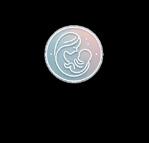

upon us to abandon our idolatrous ways as a prerequisite for redemption. Tragically, we resisted, nearly jeopardizing the geulah.
In response to the claims of the incredulous angels at the Yam Suf, the Midrash asserts that despite our religious shortcomings in Egypt, we did not compromise our Jewish language, names, or dress. Even as our faith faltered, our distinct cultural identity remained intact. This cultural distinctiveness became the foundation for Jewish identity, a platform to enable a full spiritual rejuvenation at Har Sinai. Evidently, cultural distinctiveness—even when not rooted in active religious commitment—holds intrinsic value. It preserves the framework within which a spiritual revival can occur.
Throughout history, and especially over the past two centuries, as traditional religious commitment waned among many Jews, cultural distinctiveness remained a means of preserving national identity. In many circles, particularly where religious commitment diminished, great emphasis was placed on cultivating an internal, distinct culture to preserve Jewish uniqueness.
The flourishing of Yiddish literature and theater in the 19th and early 20th century, for example, was not driven by a belief in Yiddish as a sacred language but rather as the language of a distinct and enduring people.
At this second level of Jewish identity, being a Jew means living differently, even when those differences do not manifest as halachic codes.

The third layer of autonomous Jewish identity, even in the absence of Torah and mitzvot, is the belief that we are not just a nation—we are a family. Our national history began in
Bereishit as a family, and that foundational identity remained intact even as we evolved into a nation on the night of Pesach.
This is why the Korban Pesach was designed as a family offering: תובא תיבל הש תיבל הש. The short time frame for eating the Korban Pesach ensured that families would gather to finish the meat before dawn (or midnight, based upon a Rabbinic gezeirah). Similarly, the issur against taking the meat outside the home emphasized that the offering was meant to unite the entire family in the Korban.
On the night we were born as a nation, we experienced redemption as a family.
A family bond is more than just unity—it demands deep care, responsibility, and commitment. A nation is tied by shared interests, but a family calls for devotion and sacrifice. When discussing the mitzvah of tzedakah the Rambam writes (Hilchot Matnot Aniyim 10:2): “All of Israel, and those who join them, are like brothers... And if a brother does not have mercy on his brother, who will have mercy on him?” Our connection to other Jews is not just legal or national—it is familial, urging us to extend compassion and support beyond mere duty.
Jewish identity has always been anchored in a shared sense of family. Even when dispersed across the world, we maintained a bond that defied geography. When we lost our Land, sovereignty, and military strength, our familial identity sustained us, forging an unbroken connection across distant lands. Having returned to Israel, our family experience has only been amplified: we are eager to help one another, open our homes, and engage in meaningful conversations with average Israelis who we hardly know, yet
feel deeply connected to.
FOUR - LAND, DESTINY AND PROPHECY
The next and fourth layer of Jewish identity is the belief in a historical destiny of the Jewish people known as redemption. Our redemptive destiny is inseparably tied to the Land of Israel. Finally, this national destiny is foretold in the Torah. Said otherwise: this layer of Jewish identity believes deeply in Jewish destiny in the Land of Israel as foretold by prophecy.
Belief in redemptive destiny in Israel is outlined in the tochacha of Bechukotai when the Torah describes our redemption from exile: Hashem will remember the brit Avot and redeem those whose lives still embody that covenant.
But what about Jews for whom the covenant of the Avot is no longer compelling? The Torah designates a separate covenant:
A separate covenant regarding the Land, people, and historical destiny is established. This brit ha’aretz is predicated upon the fourth layer of Jewish identity
Millions of Jews, primarily in Israel but not exclusively, live out this brit of redemptive destiny. It infuses their and our dreams of a
New building starting constuction in Baka 3 and 4 room apartments, starting at 4m shekel, small 4.5 story building, Sukka porch with every unit.
Brand New Building in Mekor Chaim
Recently finished, 4 room 111m, mirpeset, storage, parking, Shabbat Elevator, 3rd floor. 4.37m shekel
Great opportunity to buy in a new building starting construction in Arnona close to Baka. Great prices and the price isn't linked to inflation! Starting at 2.55m shekel
rebuilt Yerushalayim and Mikdash. It resonates within the soul of modern Israeli music which taps into Jewish heritage and years for Jewish destiny. And, of course, it is evident in the unwavering willingness of so many to go to war and sacrifice for the larger “story” of our people.
These types of non-Orthodox Jews in Israel are often referred to as traditional or masorati Jews. I prefer to call them Biblical Jews because they believe in the prophecies of the Torah: both about the Land of Israel being promised to our people, and about our final redemption in that Land. Unfortunately, the mitzvot of the Torah don’t resonate but the prophecies do.
The fifth and final element of a partial Jewish identity, even without full halachic commitment, is the acknowledgement of Divine authority or kabbalat ol malchut shamayim.
The first verse recited in the Malchuyot section of Rosh Hashanah Mussaf is the fourword declaration: דעו םלועל ךולמי ’ה—a proclamation of Hashem’s eternal sovereignty. Weeks before declaring Na’aseh v’nishma, we already affirmed His supreme authority and submitted to His rule. Ideally, kabbalat ol malchut shamayim translates into a life of 613 mitzvot. Yet even those who cannot or will not fully embrace the Torah’s system may still uphold malchut shamayim.
The only person in Tanach explicitly referred to as a Yehudi—the origin of the term “Jew”—is Mordechai. Since he was not from shevet Yehuda, his designation as a Yehudi is not genealogical but ideological. The Midrash explains that Yehudi signifies someone who acknowledges Hashem and rejects all other gods. By refusing to bow to
Haman, Mordechai reaffirmed his belief in Hashem’s authority, even amid the carnivals of Shushan. For this reason, he is the first and only person in Tanach to bear the title Yehudi—the essence of Jewish identity.
Many not-fully-observant Jews not only embrace the redemptive destiny of Israel but also accept Heavenly authority. They recite Shema, lay tefillin, say Tehillim, observe basic kashrut, and uphold a skeletal form of Shabbat along with other fragments of mitzvot. Though they may not display full halachic fidelity, their religious experience is anchored in kabbalat ol malchut shamayim—a recognition of Hashem’s rule.
These are the five sub-components of Jewish identity that retain ‘partial validity’ even without full Torah and mitzvot observance. The ideal is to integrate these five values with Torah and mitzvot which is the supreme value and the highest expression of Jewish identity. Not only should these five components of Jewish identity be combined with Torah and mitzvot, but they should be experienced through the lens of Torah and mitzvot.
However, loving fellow Jews means acknowledging whatever level of Jewish identity they are able to maintain, even if it is still lacking full Torah and mitzvot observance.
Pesach is not only וניתורח ןמז, but also a chag to reflect on Jewish identity in a world that still remains religiously lacking and incomplete.

Rabbi Taragin’s newest sefer entitled “To be Holy but Human: Reflections upon my Rebbe, Rav Yehuda Amital (Kodesh) is now available at: mtaraginbooks.com and in bookstores


Bar-Ilan University International School invites you to take the next step in your academic journey!
We offer Undergraduate, Graduate, PhD, and Postdoctoral programs in English and bilingual tracks (English & Hebrew).
Join a diverse, dynamic learning environment at one of Israel’s leading universities.
Apply today and shape your future with Bar-Ilan!

Impacting tomorrow, today.


BY REBBETZIN DR. ADINA SHMIDMAN
DIRECTOR, OU WOMEN’S INITIATIVE

Shabbat HaGadol calls us to look ahead— to Pesach, to redemption, and to the kind of nation we are becoming. The Haftorah begins with a vision of spiritual renewal: ’הל הברעו םִלשוריו הדוהי תחנמ, Then the offering of Judah and Jerusalem shall be pleasing to Hashem. (Malachi 3:4)
The word הברעו, from the root ברע, holds within it a world of meaning—sweetness, interconnection, and responsibility. These three layers speak powerfully to the season of Pesach and to this moment in Jewish history.
Sweetness appears in Yirmiyahu’s description of redemption: יל הברע יתנשו, My sleep was sweet to me. True redemption brings a sense of wholeness and peace. The root ברע also conveys the idea of blending ta’arovet. As in a symphony, each instrument carries its own distinct sound. Yet it’s the harmony—the intentional mixture—that creates something beautiful and whole. So too with the Jewish

people. Our lives are interwoven, our destinies bound together across generations and continents. The strength of our nation lies not in uniformity, but in unity—the sacred blending of individuals into a people with shared purpose.
From that connection flows responsibility. As Chazal teach: הזב הז םיברע לארשי לכ, all of Israel are responsible for one another. The word ןֹוברע—meaning collateral or guarantee—shares the same root. Spiritually, we serve as each other’s guarantors. My mitzvah uplifts you; your pain obligates me. Our bond is not based on feeling—it’s built into the fabric of who we are.
Since October 7, we have lived this truth. We’ve seen extraordinary unity—Jews showing up for one another with prayer, support, and deep connection. This, too, is a mincha—a collective offering, born of sorrow and strength. As we prepare for Pesach, may our togetherness, our תוברע, be the sweetness that makes our offering pleasing to Hashem.

“
YU in Israel offers a seamless blend of torah learning with a college education. This allows me to grow spiritually while working toward my degree, creating a balance that improves both my Jewish education and my future in Israel.
Achieve Excellence in Torah While Earning a YU Degree in Partnership with Top Israeli Universities



LEARN MORE AT

Immersive Torah Studies in a World-Class Beit Midrash Environment with Top Tier Rabbeim and Teachers.
Academic Degrees in Partnership with Leading Israeli Research Universities
Vibrant Student Experience and Residence Life
ENROLLMENT DEADLINE IS APRIL 23, 2025
As we prepare for Pesach, we give Maos Chitim-Tzedaka - for the poor and needy. When the Seder night arrives, we can enjoy the special Yom Tov atmosphere knowing that we have also provided for the


The Clara Hammer Chicken Fund
P.O.B. 18602 Jerusalem 91185 | Tel. 02-582-3477
Donate via PayPal at chickenladyofjerusalem.com Or directly to Hacker's Butcher Shop via credit card at Tel. 02-581-9378




“Turning Despair into Hope”
www.yeshezra.org | Director: Menachem Persoff
WHAT WE DO
We support families facing economic, family, and health challenges.
Website: www.yeshezra.org
Bank Transfer: Mercantile (17), Branch 642, A/C 79747843
HEALTH: Home visits, medicines, medical equipment, & counseling
Send Asmachta for receipt
BIG BROTHER PROGRAM: Emotional support, guidance, & referrals
Checks: “Yesh Ezra,” POB 31476, Romema, Jerusalem
Credit Card:
MEALS & SHELTER: Rent assistance, Shabbat & Holiday meals, repairs
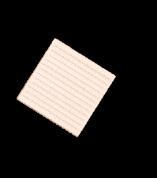
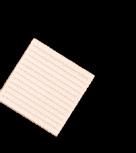

DONATE NOW!
Website

www.yeshezra.org
Bank Transfer

Mercantile (17), Branch 642, A/C 79747843
Sara – 077-820-0196 / 058-530-9161 Sun-Wed (10:00am-14.30 pm)
FAMILY EVENTS: Hachnassat Kallah, Bar/Bat Mitzva celebrations
Tax benefit for donations as per section 46a of the Israeli tax code

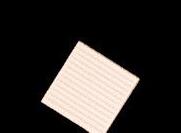
This PESACH, transform the Bread of Affliction into the Bread of Freedom. Please make a tax-beneficial, generous donation to Yesh Ezra.
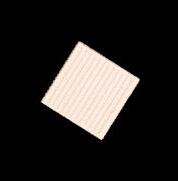
(Send Asmachta for receipt)
Checks

“Yesh Ezra,” POB 31476, Romema, Jerusalem
Credit Card
Donate with Kimcha Depiska!
Sara: 077-820-0196 / 058-530-9161 (Sun-Wed.: 10:00-14:30)

“ It just makes a lot of sense— YU, in Israel. It’s unlike any other program available in Israel or in America.
Joey Zelig, Teaneck
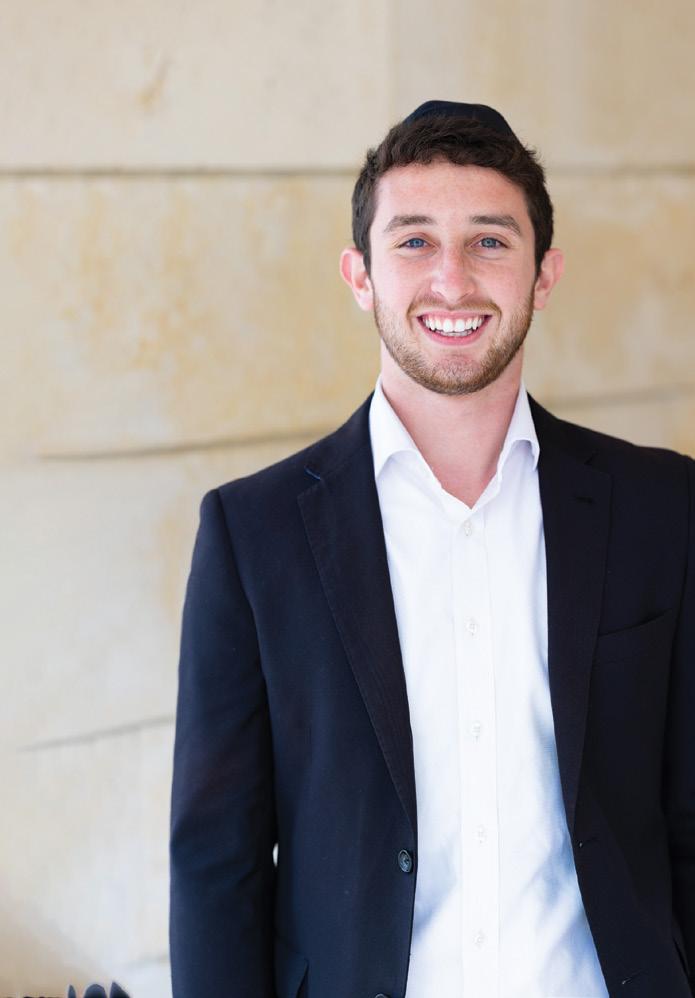
YESHIVA UNIVERSITY IN ISRAEL UNDERGRADUATE PROGRAM
Achieve Excellence in Torah While Earning a YU Degree in Partnership with Top Israeli Universities


Immersive Torah Studies in a World-Class Beis Midrash Environment with Renowned Rabbeim, Open 24 Hours.
Academic Degrees in Partnership with Leading Israeli Research Universities
Vibrant Student Experience and Residence Life
LEARN MORE AT YU.EDU/YUI ENROLLMENT DEADLINE IS APRIL 23, 2025


REBBETZIN ZEMIRA OZAROWSKI
DIRECTOR OF OU ISRAEL WOMEN’S DIVISION
The Seder night is a pivotal moment for parents and grandparents to pass down essential lessons of our heritage. It is not just a historical retelling but a transformative experience where we instill core values, messages, and a sense of identity in our children.
Often, we try so hard to find creative and fun ways to keep our children engaged— games, treats, prizes, costumes, props. And that’s wonderful! The excitement and joy of the Seder are essential to creating warm memories and positive associations with Judaism. But amidst the fun, we must ask ourselves: What are we really trying to accomplish? Pesach night is not just about keeping our children entertained—it’s about

giving them the foundations of who they are. The Seder is our opportunity to give over some of the deepest truths and most fundamental values of our Emunah. So what are these values? What is our goal—and how do we achieve it?
1. TEACHING OUR CHILDREN THAT WE ARE PART OF A GREATER STORY
At the heart of the Seder is the reminder that we, as a nation, became who we are through Yetziat Mitzrayim.
– In every generation, a person must see themselves as though he personally left Egypt. This powerful message teaches our children that they are not just passive recipients of history, but active participants in the ongoing story of Am Yisrael.
To give this over effectively, we need to create immersive experiences. For younger children, act it out—many families pretend the kids are the slaves: parents give them lego pyramids to build, or dress up like taskmasters or Paroh, or re-enact the Makkot with sound effects and props. Some dress up as Moshe and Aharon, or have a dramatic “crossing” of the Yam Suf across the living room floor.
For older kids, get deeper. Try to get them into the mindset of what it felt like to be a slave—and then to suddenly be free. Use role-playing, deep storytelling, or even questions like, “What would you have packed in your bag if you had to leave in five minutes?” One idea our family incorporated last year was photoshopping ourselves into scenes of slavery, like building pyramids, and scenes of freedom, like walking through the Yam Suf, and hanging them all over the wall.
The more authentic and real we make the experience, the deeper the connection will be. This is how we help our children truly feel they are part of the story. By the time we reach Hallel, our goal is for everyone to feel as though they have just been freed from Mitzrayim, singing with joy and euphoria, celebrating their own personal redemption after years of slavery.
2. UNDERSTANDING THAT THE STORY RECURS IN EVERY GENERATION
The theme of continuity is central to the Seder. ”הדמעש איהו“ reminds us that the story of our redemption has stood by us through all generations. Despite hardship, our people have persevered. This resilience is not just historical—it is meant to inspire our children today.
We can bring this to life by connecting it to what’s happening in today’s times. Ask: Do we see the beginning of Geula today? Encourage your children to think about the miracles around us. Talk about the incredible stories of survival from the current war—like the Iranian attack last year just before Pesach, where hundreds of missiles were launched, but not one person was hurt. Ask your children: What do you think that means? Do you think that’s just chance?
You can even make a board before the Seder titled “Signs of Geula” and invite each child to write or draw something they see in today’s world that reminds them Hashem is still watching over Am Yisrael.
The Seder is an opportunity to teach our children that Hashem is actively involved in every detail of our lives. Every miracle, plague, and moment of Yetziat Mitzrayim was a result of Hashem’s direct intervention. We want our children to see Hashem in their everyday life as well. Ask them – how do you see Hashem in your life? One powerful idea is to go around the table and have each person—kids and adults—share a short story of Hashgacha Pratit they’ve experienced. It could be something big, or something small— like finding something important you thought was lost, or meeting the right person at just the right moment. The goal is to cultivate a mindset where we notice that Hashem is always involved—just like in Mitzrayim.
The Seder is also a time for Hakarat Hatov—recognizing all the good that Hashem has done for us. We recount the

miracles of Yetziat Mitzrayim and the many ways Hashem cared for our ancestors. To make this message come alive, have each person share something they’re grateful for. If you want to get a little technological, have each family member submit a list of things they’re thankful for a few days before the Seder, and then use AI to create a personalized family gratitude song to sing together at the Seder.You can also just sing Dayeinu slowly, pausing to ask kids what each line means and why that would be enough. Try asking them: If Hashem had only done X for you, would that be enough? Let them think, feel, and express their own gratitude.
PRACTICAL WAYS TO GIVE OVER THESE MESSAGES
1. Make It Personal: Use stories, pictures, and personal experiences to draw connections between Yetziat Mitzrayim and our own lives.
2. Create Hands-On Experiences: From costumes to props to activities like sharing Hashgacha stories, interactive elements help drive the messages home.
3. Speak from the Heart: Share your own thoughts, feelings, and Emunah. When you speak authentically, your children will feel it.
4. Ask Reflective Questions: Don’t just tell—invite your children to think and express.
By focusing on these core messages and delivering them in hands-on, meaningful ways, we transform the Seder from a night of storytelling into a night of transmitting the Mesorah to the next generation. We give our children and grandchildren more than memories—we give them identity, values, and connection.

www.angelrealty.co.il
For Sale in Jerusalem
Ramot B: * 8 room cottage, 170m 4.900,000 NIS
For Sale in Efrat
Dekel: * Spectacular semi attached 540m home, 14 rooms . Two rented units 8,900,000 NIS
Zayit: * 4 room apt. next to the mall. 2,650,000 NIS
Zayit: * 3.5 room apt. Stunning view. 2.250.000 NIS
Dekel: * Semi attached home. 180m, 6 rooms + option
4.190.000 NIS
Dagan: * 250m semi attached home with pool. 7,200,000 NIS
Gabi- 0524588716






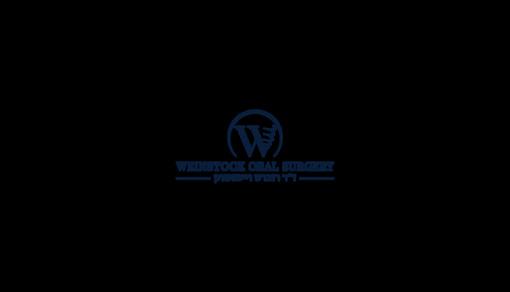

RABBI AARON GOLDSCHEIDER EDITOR, TORAH TIDBITS RAV, THE JERUSALEM SHUL BAKA, JERUSALEM RABBI AARON GOLDSCHEIDER
Shirat ha-yam, the song sung by Moshe and the Jewish people at the Red Sea, is more than an exaltation of God in verse. On close examination, it shows itself to be a credo containing foundational principles of Jewish faith and belief. Among others, it references God’s omnipotence, His eternality, and the establishment of a Temple.
The second half of the second verse of the song reads, “this is my God, and I will glorify Him; my father’s God, and I will exalt Him” (,והונאו ילא הז
א ) (Exodus 15:2). Rashi glosses the words “my father’s God” as follows: “I am not the beginning of the holiness; the holiness has been longstanding, and His divinity has been upon me from the days of my fathers.”1 In other words, we inherit our holiness as Jews from our ancestors.
service, they possess another kind of holiness. The non-Jew who converts, fully embracing Jewish life, possesses this second level of holiness, too.2
The Rav showed that this distinction is implied by the two blessings about Jewish chosenness recited every morning. We bless God “who has not made me a Gentile” )יֹוג ינשע אֹ לש(, and we bless God “who has chosen us from all peoples”
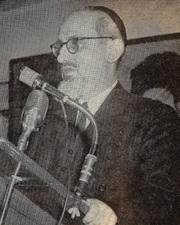
Rabbi Joseph B. Soloveitchik explained that this is one kind of holiness that a Jew possesses. Being born Jewish grants a person innate holiness—“my father’s God.” But there is another level of holiness encapsulated by “this is my God, and I will glorify Him.” When a Jew accepts upon himself or herself the mitzvot and builds a life dedicated to God’s
1. Rashi on Exodus 15:2, s.v.
. Logically speaking, isn’t this redundant? If God has not made us Gentiles, then mustn’t He have chosen us to be otherwise, to be His people? The Rav answered that one aspect of our chosenness is genealogical, that is, we are the progeny of Avraham, and so we bless God for not having made us Gentiles. A second aspect is reflected in the verses, “you shall be for Me a treasure from all the peoples... And you shall be for Me a kingdom of priests and a holy nation” (Exodus 19:5-6). This chosenness goes beyond simple lineage and is generated and sustained by active commitment and dedication to study and practice.3
These two levels of holiness and chosenness
2. Schachter, Nefesh ha-Rav, 282.
3. Koren Mesorat HaRav Siddur, 12–13.
have direct halachic consequences for the thorny case of the apostate Jew. The Jew who renounces their religion cannot erase their ancestry; consequently, their act of betrothal would be considered valid. In other areas, though, like ritual slaughter or the writing of a Torah scroll, the apostate is halachically no different from a non-Jew, rendering the meat non-kosher and the Torah scroll invalid. This can be explained using the above distinction. Jewish betrothal depends on the inborn sanctity; ritual slaughter and holy writ demand the additional holiness of commitment and observance.4
Israel was crowned with these three crowns: the crown of priesthood, the crown of kingship, and the crown of Torah.5 ,הנהכ
Thus says Avot de-Rabbi Natan . The first two crowns belong to those who are anointed, the priest and the king. Their anointing indicates an inner sanctity and nobility that accompanies their position of stature. It is a product of lineage, an innate holiness in one’s genes. The Rav argued that the same can be said regarding the crown of Torah, which is available to any Jew for the taking, and not to a select few of a particular bloodline.6 When we work hard to attain it, to become “a kingdom of priests” with acquired holiness, we become elevated and our personality is refined. Those engaged in Torah study and mitzvot are transformed and acquire a new sensitivity to and a
4. Lustiger, Derashot Harav, 208.
5. Avot de-Rabbi Natan, 41:1.
6. See the formulation in Mishneh Torah, Hilchot Talmud Torah, 3:1.
different view on the world.7
Rabbi Yosef Dov ha-Levi Soloveitchik, the Rav’s namesake and great-grandfather, identified another, similar duality in shirat ha-yam. The Midrash says that Moshe chose az (זא) as the first word of the song to right an earlier wrong involving the same word. Moshe had complained to God, “Since that time (זאמ) when I came to speak to Pharaoh in Your name, he has done evil to this people…” (Exodus 5:23).8 How does the verbal repetition of a word undo wrongdoing?
Rabbi Soloveitchik answered this with a conceptual distinction between two types of gratitude. When someone is delivered from suffering, they are grateful to God for being relieved of it. The suffering itself is not considered any cause for thanksgiving. To borrow the conceptual structure above, this is the natural, baseline kind of gratitude. When Moshe and the Jewish people rejoiced at the Red Sea, they displayed a higher-order gratitude. They were thanking God for their bondage, for through it they were the instrument of God’s glorification in the world. They had searched and found meaning in
7. Lustiger, Derashot Harav, 205–206. 8. Exodus Rabbah, 23:5.

their suffering, so they thanked God for it in addition to their rescue. This, of course, must have taken spiritual effort, of the same type required for acquiring the second holiness and the crown of Torah.
Moshe initially bemoaned the Israelites’ bondage using the word az. His choice to begin the song with az did not mysteriously negate his earlier act of misspeaking, but exemplified his and the people’s newfound recognition.
Rabbi Soloveitchik locates these two levels of gratitude in a verse recited during Hallel: “I praise You, for you have afflicted me, and You have been a salvation for me” (Psalms 118:21). That is, we thank God for the affliction because it prompts the salvation, by which the (ex-) sufferer becomes a vehicle for the sanctification of God’s name. We show gratitude for the experience in its entirety.9
The Rav applied this to a puzzling inclusion in the prayer of Al ha-Nisim, which we say on Chanukah and Purim. Why do we thank God “for the wars” )תֹומחלמה לע( during the Maccabean era and when the Jews fought back against the anti-Semites of Shushan and the rest of Persia? Perhaps the intent is to declare that our faith in God is so strong that we perceive even the darkest and most challenging moments our nation has faced to be the product of God’s providence, and we declare our submission to His inscrutable will.10
9 Beit ha-Levi, Beshalach, s.v. השמ רישי זא 10. Shurkin, Harerei Kedem, 303.

Rabbi Goldscheider’s most recent OU Press Publication, “Torah United” on the weekly Parsha, can be ordered directly from Rabbi Goldscheider at aarong@ouisrael.org at a special price for Torah Tidbits readers.


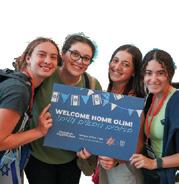








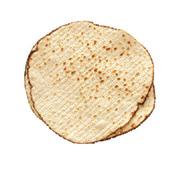
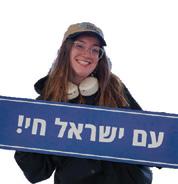


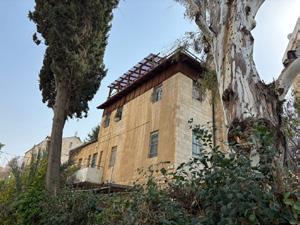
A unique property with great potential!! An entire floor (middle floor) with four directions of light and air . 119 sqm plus a separate unit on the ground floor. A privately registered garden of 173 sqm, 30 sqm of balconies and additional building rights of 71 sqm.
Asking price : 11,360,000 NIS Lisa: 052-2633816 Lori: 054-3060109 Alex Losky Ltd www losky co il 02- 6235595
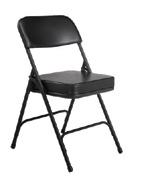

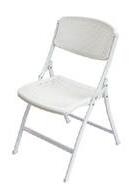
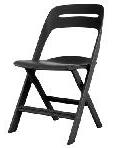




RAV DANIEL MANN
Rav Daniel Mann
Question: I usually take off from work for Chol Hamo’ed, but this year, since I will not have any vacation hours left, I will probably have to work. (My employer is not Jewish, and my job is not mitzva related.) Since I get paid hourly, may I get paid for the work I will have to do?
Answer: The two major categories of situations in which doing melacha is permitted are: 1. When the purpose of the work is appropriate for Chol Hamo’ed, e.g., it enhances the chag, it is for a mitzva or communal needs. 2. Davar ha’aved – i.e., if the work will not be done on Chol Hamo’ed, a loss will be incurred. While davar ha’aved permits even to perform “expert work” (Mishna Berura 545:35), it is forbidden to purposely set up the situation whereby the work will be needed specifically on Chol Hamo’ed (Shulchan Aruch, OC 538:1) While the classic cases are of loss to possessions (see ibid. 537-8), poskim posit that defying an employer’s work policy in a way that will likely result in firing or disciplinary steps is also davar ha’aved (see Shemirat Shabbat K’hilchata 67:11), which seems to be your case.
All things being equal, it is proper to
arrange matters so that one’s yearly vacation time includes [as much of] Chol Hamo’ed [as possible]. Halacha is aware that in practical life, often “all things are not equal,” including in regards to choosing vacations (see Zichron Shlomo, ruling #18 of Rav Moshe Feinstein; Shemirat Shabbat K’hilchata 67:14). To deal with the many “moving pieces” in such matters, it is best to discuss borderline cases with one’s personal rav. We will focus on what you asked: assuming you may work because of davar ha’aved, can you receive payment for it, or is the payment gain rather than preventing loss?
The primary problem with working on Chol Hamo’ed is any melacha you must do, but you are correct that being paid complicates matters. The gemara (Mo’ed Katan 12a) says that the workers in the Exilarch’s house were allowed to benefit from their work on Chol Hamo’ed because it was not in the form of classical pay. The Rosh (Mo’ed Katan 2:9) infers from this that it is forbidden to pay the worker even when his actions are permitted on Chol Hamo’ed because the pay makes it “like mundane matters.”
The problem of receiving reward differs from the parallel issue on Shabbat and Yom Tov, which is even when the person is inactive. Here it is a problem only if the pay
Eretz Hemdah, the Institute for Advanced Jewish Studies, Jerusalem, is headed by Rav Yosef Carmel and Rav Moshe Ehrenreich, founded by Rav Shaul Yisraeli, zt”l, to prepare rabbanim and dayanim to serve the National Religious community in the Israel and abroad. Ask the Rabbi is a joint venture of the OU, Eretz Hemdah, and OU Israel’s Torah Tidbits. relates to activity with a problematic element, with the pay tipping the scale towards stringency (see Noda B’yehuda II, OC 104; Chut Shani, OC 542:1). Some sources focus their requirements on the Jewish employer who employs a Jew, (see language of the Shulchan Aruch, OC 542:1 and Be’ur Halacha ad loc.). While one might think that there would not be a problem if the employer is not Jewish, there are indications that there is a problem from the worker’s perspective (see discussions in Chol Hamo’ed K’hilchato, p. 307, Shemirat Shabbat K’hilchata 66:(164)).
If your work is not based on melacha or tiresome work, payment may be permitted (Noda B’yehuda ibid.). Also, the Rama (OC 542:1) rules that when one’s work needs to be done because of the employer’s davar ha’aved, the worker can charge for it; the Be’ur Halacha (ad loc.) allows relying on this only when there is no good alternative. Arguably, since you are working due to davar ha’aved, you too can get paid for it. This seems the assumption of several


poskim discussing allowing employees to work to avoid being fired, who do not raise the caveat of not being paid for it. While perhaps they refer to workers who are paid a flat amount, not by the hour, this distinction is unproven conjecture.
In any case, since you have a set job, it is permitted to receive the pay because it is b’havla’ah (“swallowed up” by inclusion with other earning – see Shulchan Aruch, OC 306:4), even if you are paid per hour (Shemirat Shabbat K’hilchata 28:65). According to most poskim (ibid. 66:40; Moadim U’zmanim IV:301, against Chut Shani, OC 242:21), this works also for Chol Hamo’ed.
In the final analysis, you may get paid.



For a Din Torah in English or Hebrew contact:
Eretz Hemdah–Gazit Rabbinical Court 077-215-8-215 • Fax: (02) 537-9626 beitdin@eretzhemdah.org







ד“סב
As we continue our study of Tehillim this month, I have been thinking about David’s personality as evidenced in this sefer, in contrast to the man we thought we knew after studying Sefer Shmuel. In Sefer Shmuel, David is portrayed as a strong warrior - fueled by his unwavering faith, he is a tower of strength, facing fierce enemies with confidence and skill. In Sefer Tehillim we see David’s vulnerability. It is easy to envision the soft-spoken shepherd leading his sheep through the pastoral setting that provides so much of the imagery in his stirring poetry, and perhaps more challenging to view the author of these psalms as the valiant warrior leading the charge in battle. We may wonder, which of these is the authentic personality of David HaMelech? Is he the fearless fighter or the peace-loving poet?
In Shmuel Bet 23:8 the pasuk states: הלא דודל רשא םירוביגה - These are the heroic warriors of David. The second warrior listed is Adino Ha’Etzni, a name unfamiliar to us from anywhere else in Tanach. The Gemara interprets the pasuk hermeneutically: הלא
- These are the names of the mighty actions of David. Adino Ha’Etzni reflects that when David studied Torah, היה
- he would soften himself
like a worm, and when he went out to war,
ומצע השקמ היה - he would harden himself like wood. 1
The ability to harmonize conflicting character traits is essential to David’s personality, and serves as a model for us to emulate. Maimonides taught that in the process of perfecting one’s character, he should seek to find the balance between two extremes of a given trait. Gevurah, strength, is the midpoint between recklessness and cowardice. The Rambam cites a teaching of Hazal as his source for this idea, which in turn is based on a pasuk we encounter in this month’s study of Tehillim. David HaMelech wrote: ךרד םשו"
- One who places a path, I will show him Hashem’s salvation.2 Hazal taught: Do not read vesam, rather vesham.3 Maimonides explains, vesham means to consider, to evaluate. If a man will always carefully determine his behaviors, directing them to the medium course, he will reach the highest degree of perfection possible to a human being. Such a person will be worthy of Hashem’s salvation.4
The redemptive personality described by
the Rambam is reflected in the Pesach Seder. Rav Haggai Lundin points out that on the Seder night, while the goal is to achieve spirituality, the quest is punctuated by physical activities - eating the karpas, matzah, maror, a festive meal and the afikoman, and drinking four cups of wine. In Jewish thought, physical and spiritual activities are not mutually exclusive; rather, they work together to elevate the mundane, to allow us to apprehend the divine within our physical experience.
One who considers his actions, and directs them to a higher purpose as taught by the Rambam, experiences the redemption from םירצמ - reenacting the physical freedom from the slavery of Egypt, as well as the spiritual freedom from the meitzarim, the narrow straits that confine and challenge us in our efforts to be our best selves.5
As we celebrate Pesach this year with a deepened connection to Sefer Tehillim, let us draw inspiration from the personal example of David HaMelech and strive to achieve a balanced personality in our service of Hashem, drawing us ever closer to the ultimate redemption, both personal and national.
Mrs. Leah Feinberg is a master educator who taught at the SKA High School for Girls in Hewlett for twenty-one years, also serving as Tanach Department chairperson and New Teacher Mentor. Leah is currently on the faculty of the OU Israel Center and has taught in all three cycles of the OU Women’s Initiative Nach Yomi program
In the OU Women’s Initiative Nach Yomi series, currently in its third cycle, women scholars deliver a daily shiur on the books of Prophets (Neviim) and Writings (Ketuvim) at the pace of a chapter a day. Shiurim are geared toward learners of all levels who would like to participate in the twoyear Nach Yomi study cycle. Visit the OU Women’s Initiative to register for additional content.








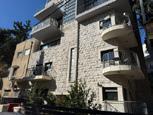

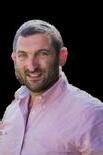
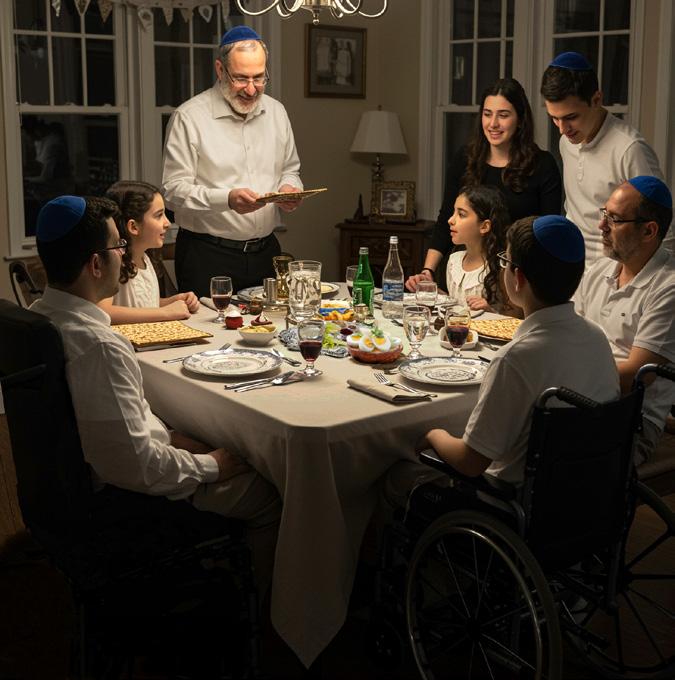


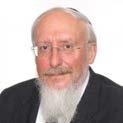
“This is my G-d and I will extol Him” R Eliezer says: Whence is it derived that a maid-servant beheld at the Red Sea what was not beheld by Ezekiel and the other prophets, of whom it is written (Hosea 12:11)
The economist John Kenneth Galbraith once commented that the definition of a true philosopher is someone who can defend two polar opposite theories and be comfortable with Galbraith was on to something, but he was preceded by Chazon Ish.
“And to the prophets I appeared (in various) guises” and (Ezekiel 1:1). (Mechilta Mesecheta D’Shira)
In a letter, Chazon Ish comments on the qualifications of a Navi. He quotes Rambam for example who states that Nevu’ah can only be received and transmitted if the prophet is b’simcha. Remarkably that means, comments Chazon Ish, that when Yirmiyahu wrote Eicha he was b’simcha! This counter-intuitive reality highlights the fact that a person has the capacity to live with two contradictory qualities and function comfortably with both of them simultaneously.
Rabbi Meir says: From where is it derived that even fetuses in their mother’s womb recited the song of the Red Sea? As it is stated in the chapter of Psalms that describes the Exodus from Egypt: “In assemblies bless G-d, the L-rd, from the source of Israel” (Brachot 50a)
Rabbi Nehorai expounded: An Israelite woman would pass through the sea, with her son crying in her hand, and she would extend her hand and take an apple or a pomegranate from the sea and give it to him, as it is stated: “He led them through the depths, as through the wilderness “ (Psalms 106:9) just as in the wilderness they lacked nothing, so too in the depths they lacked nothing. (Shemot Rabba 21:10)

No other miracle in the history of our people is documented with such hyperbole. Clearly the splitting of the sea and the song celebrating the final “out of Egypt” moment is unparalleled in our history, an uncommon
In fact a careful reading of the first and second chapters of Rambam’s Hilchot Deot will reveal that this is the proper understanding of the Golden Mean, the middle path in exercising character traits. Contrary to the generally accepted understanding of this central motif that this “middle road” is “moderation” in the classic sense ( not extremely arrogant yet not extremely humble, but somewhere in the middle). Rabbi Menachem Mendel of Kotzk was known to say “A horse walks in the middle of the road not a Jew”.
denominator. The song is actually referenced twice daily, in Shacharit and Ma’ariv. “Moshe and Bnei Yisrael sing to You with great simcha: Who is like You …..ךומכ ימ?……”
Two questions:
Why do we reference only this one verse of רישי זא? Why is it in the present tense?
A proper analysis of Rambam’s halachot will reveal the true understanding of the Golden Mean.
He can also exercise extreme humility and an embracing love
It is not about a constant positioning “in the middle “Deot is about being in total control of one’s emotions. True success
Take a look at רישי זא and you will realize it is a two dimensional song of simcha with ךומכ ימ as the bridge and dividing line. The song celebrates the miracle of the splitting of the sea, the past, as well as the future. The return to Eretz Yisrael, Yerushalayim and the rebuilding of the two Batei Mikdash are clearly referenced. רישי זא is not just a song of simcha about the moment but about the millennia of our people. Shirat Hayam is not a celebratory song about the Exodus only.
םירצמ תאיצי Is emblematic of all of Jewish History. The simcha of knowing that the Almighty continues to take us from תולג to הלואג from suffering to redemption. Read the Haggadah carefully at the seder and it will be obvious to you.
However as it has been for more years than not, we prepare to sit at the seder celebrating our freedom once again with much anxiety. Military victories but innumerable loss of holy soldiers’ lives. Hostages freed but hostages still held and hostages no longer alive.
Worldwide antisemitism without boundaries from Ivy League universities to the common streets. But something else is happening on campuses and streets of America. Young Jews are seeking out their Jewishness, as one university student said as he entered a Kiruv center “I’m here because I want to know what Judaism is so that I can understand why they hate me.”
We are in awe and inspired by the faith of the released hostages. Young people from totally secular backgrounds inexplicably adopt observant lifestyles while in captivity. Fasting on Tisha b’Av and Yom Kippur, keeping Shabbat and kashrut under unspeakable conditions. At the same time their formally unobservant parents were embracing Torah and mitzvot observance unbeknownst to each other!
We are not prophets and it would be audacious to suggest that it is lack of observance of this or that mitzvah that is the cause of our momentary challenges. This is not a quid pro quo. But one cannot ignore the facts. Jews of all stripes are responding to the moment with Jewish sensitivity. Neshamot are awakening and the Shomer Yisrael is not sleeping.
The unbridled simcha of the splitting of the sea and the exodus from Egypt will once again repeat itself. Our released hostages, chayalim and young students are preparing us for the simcha now.
Concerning the unusual singing of this magnificent רישי זא:
Rav Hutner (Mamorei Pachad Yitzcchak), asks why this unique simcha does not deserve a special Yom Tov celebratory date of its own. Why is it simply the seventh day of Pesach? He answers that precisely because it is not a simcha about one particular moment but




rather in his words “םייח תחמש – Joie de vivre”! On every day in every generation we celebrate the reality that the Almighty invariably redeems us (םדימ וניליצמ).
Paroah and Egypt are emblematic of every deranged leader and their hateful people bent on annihilating Am Yisrael.
Paroah and the Egyptians with their illusory power and evil represented by the Nile River the center piece of their society, were swept away in the Red Sea. This is emblematic of the recurring story of Jewish History. When we embrace the Almighty via the mitzvot of the Seder night and demonstrate our faith in His love for us He responds in kind. From galut to ge’ula
From the Nile to the Yam Suf
From the River to the Sea!
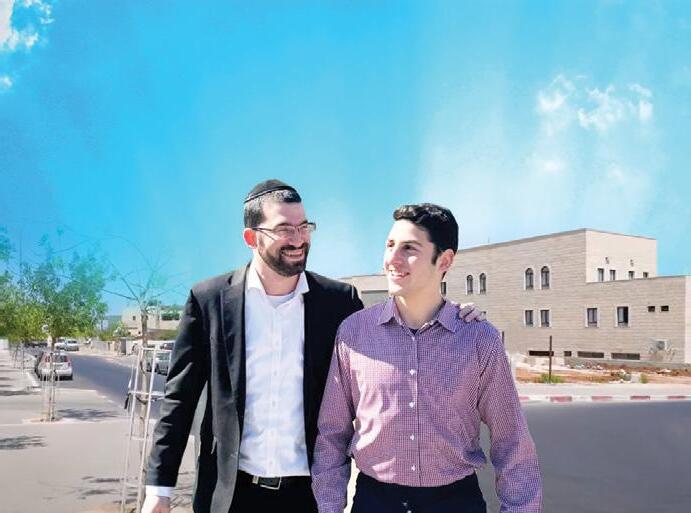







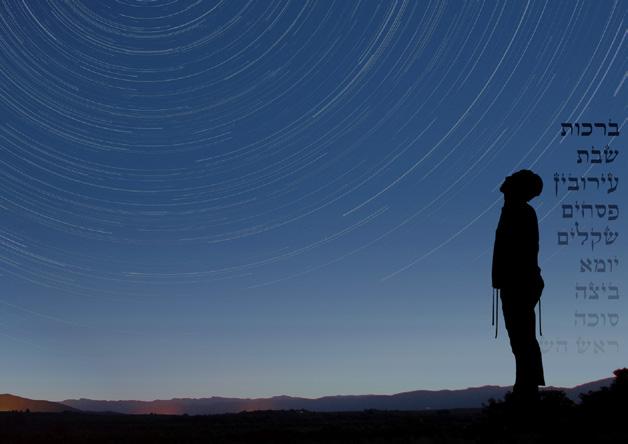




We all grew up hearing the story: during the plague of darkness, Bnei Yisrael got a sneak peek at the Egyptians’ wealth. But they didn’t touch a thing—yet. Then, when it was time to leave, they “borrowed” gold and silver from their Egyptian neighbors, knowing full well there was no return policy. A genius scheme! The Egyptians got played, literally handing over their wealth to Bnei Yisrael. L’chaim to the ultimate heist!
As with most childhood stories, there’s a whole lot more beneath the surface.
Robert Kiyosaki’s bestselling book Rich Dad, Poor Dad presents a powerful idea: the real difference between assets and liabilities. Many people assume wealth means accumulating luxury—fancy cars, oversized houses, and expensive possessions. But in reality, these things often drain time, energy, and money. The more you own, the more your belongings own you and the harder
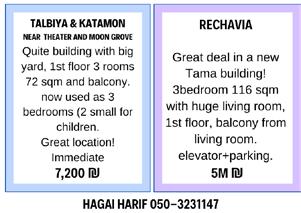
you have to work to maintain them. True wealth, Kiyosaki argues, is about investing in possessions and developing habits that add real long term value to your meaningful pursuits in life.
Like everything else that’s right and true in the world, its origin can be found in the Torah. Rich Dad, Poor Dad is no exception. Now, let’s take a closer look at a pasuk in Parshas Bo (Shemos 11:2):
“Please speak in the ears of the people, and let each man request from his neighbor, and each woman from her neighbor, silver and gold vessels.”
A fascinating question emerges: Why does Hashem say אנ (please)? Usually, getting free gold and silver doesn’t require much convincing. What made Bnei Yisrael hesitant?
The answer lies in understanding the deep impact of Egyptian culture. Bnei Yisrael were not only physically enslaved; they were also deeply influenced by Egyptian values, which glorified material wealth to the extreme. The Egyptians believed that possessions were so essential that they buried their dead with treasures to take into the afterlife. As Bnei Yisrael prepared for true freedom, they were not looking to replace one form of servitude with another. They
sought something greater—freedom to live with meaning rather than being trapped by the endless pursuit and burden of owning stuff.
So why did Hashem insist they take the wealth? Because as Rashi explains, He had promised Avraham that his descendants would leave Mitzrayim לֹודג �ש וכרב—with great wealth. However, this wealth was not simply for personal gain; it was a test and an opportunity. The same gold taken from Egypt would later be used in two strikingly different ways—some for the tragic sin of the Golden Calf, and some for the holy construction of the Mishkan. The challenge wasn’t in having wealth—it was in using it wisely. Would they become rich Jews or poor Jews? Would they utilize their possessions as tools for holiness or as distractions from the real opportunities of freedom?
This challenge is timeless. Every generation struggles with defining what it means to be “rich”. Western society tells us that being rich means accumulating more—more money, more status, more stuff. But if we’re not careful, those very things can weigh us down, keeping us from dedicating our time and resources to what truly matters. The Torah teaches us that wealth is neither good
nor bad—it depends on how we use it. Do we use our resources to elevate ourselves and those around us, or do we let them pull us away from our higher calling?
As we sit around the Seder table, sharing with our children the story of our nation’s birth, it’s a perfect time to reflect: Are the things we chase—our possessions, habits, and goals—true assets that bring us closer to Hashem, or are they liabilities that only create an illusion of progress? Pesach is a time of renewal, a chance to break free from our personal Mitzrayim and reassess our values. Are we investing in what truly matters—our relationship with Hashem, our families, and our spiritual growth—or are we slaves to the gold and silver of today, weighed down by distractions that keep us from reaching our true potential?
Something to think about.
May we all merit the ultimate freedom— speedily in our days!
Rav Shimon Kronenberg is the Founder and Rosh Yeshiva of Mesivta Yesodei Yisrael of Beit Shemesh. An innovative Boys High School dedicated to developing the next generation of leaders in Israeli Society. To learn more about Mesivta Yesodei Yisrael or to contact Rav Kronenberg, please visit myy.org.il

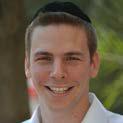
Rabbi Elyada Goldvicht Founder Semichas
Aliya-by-Aliya Sedra Summary
Chaver and Rav of Kehillat Lev Ra’anana
Rabbi Reuven Tradburks
RCA Israel Region
RABBI ELYADA GOLDVICHT FOUNDER SEMICHAS CHAVER | RAV KEHILLAT LEV RA’ANANA
The following outline presents a guide to the laws and customs of the observance of Rosh Hashanah. May Hashem bless this upcoming year with health, happiness and success for לארשי ללכ and the entire world! Shana Tova!
THURSDAY APRIL 10TH -
In most years, firstborn males customarily fast on erev Pesach as a remembrance that they were saved during תורוכב תכמ. 1 The fast applies to all firstborn males, including kohanim and levi’im, regardless of whether they are firstborn from just the father, just the mother, or both. It is also customary for fathers to fast on behalf of their firstborn sons who are not yet Bar-Mitzvah.2 This year, because erev- Pesach is on Shabbos, ta’anis bechoros is pushed up to Thursday, April 10th, ןסינ בי. 3 Today, the custom is for the bechoros to partake in a siyum which exempts them from fasting, so firstborn should make sure to attend a siyum on Thursday morning before eating.4
There is a custom based on the םירדנ ארמג ):גכ( to perform םירדנ תרתה – nullification of vows, on Erev-RH in order to enter the new year without violating the prohibition of transgressing vows 1. Any three men
1 See
In most years, bedikas chametz is performed the night before Pesach.5 This year, when the night before Pesach is Shabbos and one may not carry a candle, bedikas chametz is performed on Thursday night, starting at םיבכוכה תאצ (check your local calendar). As in every year, a bracha is recited beforehand6 and one may not eat, perform any work, or learn Torah before the bedikah.7 If you have a set ma’ariv minyan at tzeis, you should daven ma’ariv first and then do the
on תליחת(

bedikah.8 If you have a set minyan at a later time, you may perform the bedikah first at tzeis and daven ma’ariv later. If you usually daven ma’ariv at home, you can perform the bedikah first and then daven ma’ariv or daven ma’ariv and then perform the bedikah.9 After the bedikah, “Kol chamira” (bitul chametz) is recited.
FRIDAY APRIL 11TH
above Bar-Mitzvah are qualified to form a Beis-Din and nullify םירדנ of others even if they are relatives with one another and to the one who is nullifying his vows. If you do not understand the Hebrew it is best to recite it in a language that you understand.3 One can perform םירדנ תרתה over Zoom as long as the three members of the Beis-Din are sitting together and they see the person reciting the הרתה (i.e. his camera is on).4 With regard to women, some say that if she is married her husband should be her messenger for םירדנ תרתה and add the words “and this is also for my wife”,5 while others say that it is best for women to rely on the םירדנ תרתה
Regular Shacharit is recited, including רומזמ״ ״הדותל and ״חצנמל״ before
. All leftover chametz that you will not consume on Shabbos should be burned by the beginning of the 6th hour of the day (תוינמז תועש).10 The nussach of “kol chamira ” is not recited after the burning of the chametz, but rather on Shabbos morning, as chametz bread is still in your possession for use in lechem mishnah.11
The Rama writes that there is a custom for men to go to the Mikvah on Erev-RH.7 If there is no safe place to go to the Mikvah one can take a shower instead.8 The shower should be long enough for 16 liters to be poured on one’s head.9
2 ג-חכר ד”וי ןמיס ע”וש
3 )ח-חלק ללכ( םדא ייח
For those who sell chametz or ץמח
4 Rav Schachter הנורק יקספ #50- ה תוא’
5 (חלש-א”ח) תוגהנהו תובושת
6 )י-א”פ( המלש תוכילה
7 ד-אפקת
8 Rav Schachter ד תוא #50- הנורק יקספ’
9 )אכ-ד”ח( קחצי תחתמ
, make sure to do so on Friday. Be sure to roast the עורז and egg for your Seder plate on Friday. If you forget, you may only roast them on Motzaei Shabbos (Yom Tov) if you intend to eat them on Yom Tov.12 Additionally, preparation of the salt water13 and the grinding of the maror should le’chatchilla take place on Friday. If you forget to prepare the salt water on Friday, you may prepare it normally on Yom
Tov night.14 If you wish to grind the maror on leil ha’seder so that it retains its sharpness, Ashkenazim may do so with a minor15 shinui, and Sephardim may do so even without a shinui. 16 One should also check the lettuce used for maror for insects (or soak it, if “Gush Katif” lettuce in Israel is used) on Friday. Prepare a yahrtzeit candle on Friday that will burn through Motzaei Shabbos, allowing you to light the Yom Tov candles from an existing flame.17 Also, if possible, it is best to prepare the candles for Yom Tov before Shabbos. If you are having your seder at someone else’s house and have a custom to wear a kittel at the seder, you may not bring your kittel to his house on Shabbos or to shul for ma’ariv because you are preparing from Shabbos to YT.18 Therefore, make sure to bring it over before Shabbos or go back home after ma’ariv to pick it up.
It is best to ensure that all food prepared for the Shabbos meal is Kosher for Pesach, except for the bread used for Lechem Mishnah, which should be eaten outside.19
It is best to use chametz20 for Lechem Mishnah

054-462-9963 | Contact me for details, pictures and videos
Baka: Historical Jerusalem house: 1st floor, 7 rooms, 200m, high ceilings, 3 bathrooms, 3 balconies, central AC, private heating, 2 entrances. 12 mil NIS


Greek Colony:
1st floor, high ceilings, original floor tiles, 2 balconies, storeroom, 4.75 mil NIS
German Colony:
Private Home on 500m plot. Details upon request.
Penthouse, 8 rooms, approx 280m, succa balcony, saferoom, private parking fully furnished, equipped kitchen, long term 27000 NIS

.18 19 ג-דמת However, if you prepare a chametz dish for Shabbos, be sure to clean the pot before Shabbos, finish the food before the 5th hour on Shabbos day, and do not eat it on Pesach dishes see )י-ח״פ( המלש תוכילה. 20. The Rama א-דמת writes that the custom is not to use matzah ashira. However, the ש״הרע )ה-דמת( writes that the Rama would agree that on erev Pesach that falls out on Shabbos, you may use matzah ashira for lechem Mishnah.
that does not make too many crumbs (e.g., pita).21 It is best to recite the hamotzi and eat the bread outside the house or in a different room22 over a plastic tablecloth that can easily be disposed of. 23 When doing this, have in mind when reciting the hamotzi that you will finish the meal inside or in a different room.24 It is best to buy a small amount of Lechem Mishnah that will certainly be finished on Shabbos, but each person should make sure to consume at least a k’zayis of Lechem Mishnah.25 If you are still concerned about having leftover bread, you can use a matzah as your second Lechem Mishnah26 (but it is best to keep the matzah in a bag, to prevent breadcrumbs from falling on it).27 Some Ashkenazim have the custom to use kosher for Pesach matzah ashira (matzah
.21
26. Matzah can be used for the second Lechem Mishnah even at the day meal.
made from flour and fruit juice, eggs, or oil) for Lechem Mishnah.28
After finishing the Lechem Mishnah, check the floor to see if any crumbs have fallen while eating. If there are crumbs on the floor and you are eating on a tiled floor, sweep the floor29 and throw the crumbs in the toilet.30 If there is a communal garbage for your building, you may also dispose of the chametz crumbs in the communal garbage.31 If the leftover chametz is larger than a kezayis, it is best to crumble it into pieces smaller than a kezayis.32 Do not dispose of crumbs in your private garbage bin (whether the one in your apartment/house, or the big green one if you live in a stand-alone house in Israel and it is designated just for you.) If your garden is not paved, it is best to eat right outside the door, where it is paved.33 If crumbs do fall on the dirt, you are not allowed to sweep that area34 and you should just leave the crumbs there to be trampled upon and have in mind during bitul chametz that these crumbs will be included.35
Before continuing the meal at your regular table using kosher for Pesach dishes, wipe any possible crumbs off your clothing and wash your hands and mouth.36 It seems from the Mishnah
28. See footnote #19 and )הנק
, who passkins that one may use matzah ashira for the first two Shabbos meals and should be careful to finish eating them before
Berurah that it is best to bentch where you ate the Lechem Mishnah, but if it is too difficult, you may bencth where you ate.37 , 38 It is best to bring a matzah to the table or place you are bentching in order to recite bentching with bread on the table.39
One must wake up early on Shabbos morning in order to daven and eat the Shabbos meal before
(check your local calendar for the exact time).40
If you are using any chametz utensils on Shabbos, make sure to clean them and place in a closet or cabinet marked “chametz” before the 6th hour.41 If the closet is taped up, you may not untape it on Shabbos.42
On erev Pesach, from the start of the 5th hour, chametz may no longer be eaten (תליכא
ץמח), and from the start of the 6th hour, it is prohibited to derive any benefit from it. 43 Any leftover pita or chametz on Shabbos morning may be given to a non-Jew as a present44 or fed to a dog before the 6th hour.45 Alternatively, flush the leftover bread and chametz down the
.37
38. The הכרבה תאזו passkined (orally) that when eating bread elsewhere in the same house or in an enclosed garden next to the house, it is considered ”רדחל רדחמ״ whether the dining room table is visible from where the bread was eaten or not. Therefore, it is permissible to bentch at the regular table where most of the meal was eaten.
39
ב״נשמ. When there are no crumbs on the table, one is allowed to bring a whole loaf to the table for bentching
40. ד״קס
ב״נשמ. Additionally, waking up early will enable you to have seuda shlishit before
, as suggested below.
. One should not drink over dirt, to prevent it from spilling on the ground, which violates ערוז
44. In places without an eiruv, see
what to do.
toilet or dispose of it in the garbage in the way mentioned above. After the 6th hour (i.e., chatzos), the chametz is muktzah and you should get a non-Jew to flush it down the toilet. If a non-Jew is not available, the chametz should be covered until Chol Hamo’ed, when it should be burned or flushed down the toilet.46 Like after the night meal, make sure to clean off your clothing, collect any chametz crumbs, and properly dispose of them (as mentioned above). Additionally, be sure to wash your hands and rinse your mouth before entering the house (and before the 5th hour).
Before the end of the 5th hour and after disposing of all your leftover chametz, you must be mevatel (nullify) all potential leftover chametz.47 The nussach can be found in the Haggadah and is the one recited after biur chametz.
There is an obligation for both men and women to eat three meals every Shabbos. One should be extra careful to fulfill this obligation because those who do will merit to be saved “from the pangs of Mashiach, from the war of גוגמו גוג, and from din gehenom.”48
Fulfilling the obligation of seuda shlishit on erev-Pesach is complicated because ideally it should be eaten with bread,49 but according to the S”A you can only fulfill the obligation of seuda shlishit after the time of Mincha Gedola (the 6 ½ hour of the day),50 when one is no longer allowed to eat bread (as mentioned, chametz may only be eaten until the 5th hour). Furthermore, you may not fulfill your obligation of seuda shlishit with matzah, since one is prohibited
to eat matzah on erev Pesach.51 If so, how does one fulfill seuda shlishit?
There are a few options given by the posskim:
1. The S”A passkins that one should eat matzah that was made with flour and fruit juice (matzah ashira), but only in between the 6½ and 10th hour of the day.52 Starting a meal after the beginning of the 10th hour of the day is forbidden because you need to enter Pesach with an appetite. The Rama argues that the custom is not to prepare matzah ashira. 53
2. The Rama writes that seuda shlishit is fulfilled by eating fruits or meat/fish instead of bread.54 The ה״לש writes that it is best to use fruit from the shivat ha’minim in order to be able to recite a bracha me’ein shlosha at the end.55
3. Eat kneidlach56 or gebroks cake,57 but only until the 10th hour of the day.
4. After davening, wash and eat a k’beitza58 of bread (pita) with some food and bentch. After bentching, get up, walk around,59 wait a bit,60 and then wash again and begin seu-
53. See note #19 and #27
.46
47. ו-דמת. Bitul does not work in the 6th hour.
57. Although, the Rama in ב-אעת passkins that you are not allowed to eat crushed matzah baked with oil and wine on erev Pesach (since it is forbidden to eat matzah on erev Pesach), Rav Shlomo Zalman Auerbach felt that since the matzah loses its ”םחל ראות״, its resemblance to bread, in the kneading process, it would be permitted (see 15 ׳ה ח״פ המלש תוכילה). RSZA adds that if you are kove’ah seudah on the cake, you should also wash and bentch (as discussed in a previous SCP zman). In contrast, the תובושת
ג-אעת passkins that one should not eat gebroks cake on erev-Pesach.
60. Some say the amount of time it takes to walk 4 amos (
דמח), some say 15-20 minutes (ו-דמת
), while others say to wait half an hour (
da shlishit. All of this must be completed before the 5th hour of the day (i.e., ןמז ףוס ץמח תליכא). However, if you begin seuda shlishit with bread and finish eating the bread before the 5th hour, you can continue eating kosher for Pesach food after the 5th hour. This opinion holds that one can fulfill seuda shlishit before chatzot.
5. The obligation of seuda shlishit is fulfilled by learning Torah.61
Lema’ase, the Mishnah Berurah 62 writes that the Gr”a had the custom to eat both meals before the 5th hour of the day, but only if there was enough time to properly stop in between meals. In the years when Rav Shlomo Zalman Auerbach would daven netz, he would have both meals before ץמח תליכא ןמז ףוס and then some fruit after the 6½ hour to fulfill both opinions. In his later years, when he did not daven netz, he would have one regular meal before ץמח תליכא ןמז ףוס and then have fruit for seuda shlishit after Mincha Gedola. 63
It is best to daven Mincha Gedola 64 and then recite חספ ןברוק רדס. 65 Those who have the custom to learn the Haggadah from םידבע״ ״ונייה until ״וניתונוע לכ לע רפכל״ on Shabbos Hagadol do so on this Shabbos of Erev Pesach.66 You are not allowed to prepare the seder table on Shabbos because it is forbidden to prepare from Shabbos to Yom Tov.67 You are allowed to nap on Shabbos with intent to be awake for the seder,68 but you are not allowed to verbally say “I am napping so I can be awake for the seder.”69
You are allowed to change clothing on Shabbos towards the end of the day, since the new clothing is also for Shabbos, assuming there is still some time remaining before shekiyah. Similarly, if you are participating in the seder away from home, you are permitted to bring your Haggadah to shul for Ma’ariv, as you can learn from it on Shabbos as well.
During the Amidah, ״ונעידותו״ is added after ״ונתרחב התא״ as havdallah between Shabbos and Yom Tov. If you forgot to say it and remembered before saying Hashem’s name in the bracha of ״םינמזהו
, you go back and say it, but if you already recited Hashem’s name, you do not go back.70 If you did not recite ״ונעידותו״, you may not perform any melachah permitted on Yom Tov until you say ״שדוקל
Women who did not daven ma’ariv and men who are lighting Yom Tov candles and forgot ונעידותו should say ״שדוקל
before setting and lighting the candles.71 The match used for lighting the candles may only be lit from a preexisting flame.72 Additionally, when lighting the candles, the woman should have in mind that the candles will be used for havdallah if no other candles will be joined to it (see below).73 The bracha
70. ד“קס ב“נשמו ב-אצת. The )ז-טצקת(
passkins that if you already said Hashem’s name in ״וניקולא
, you should not go back.
73. Rav Neventzal )אי-דיקת( ארקי
, since Shabbos/YT candles today are lit ט“וי
and you can only recite שאה ירואמ on candles that were lit for light.
recited on the Yom Tov candles is לש רנ קילדהל״ ״ט״וי, and both Ashkenazim and Sephardim recite the bracha before lighting the candles.74 Some women have the custom to recite ״ונייחהש״ when lighting the candles. Others do not, and they rely on listening to the “ונייחהש” during kiddush. One can follow their family custom, but women who recite ״ונייחהש״ when lighting may not recite it again during kiddush if they recite kiddush themselves together with everyone (see below), and they should not say amen if they listen to kiddush being recited by someone else. 75 After lighting the candles, one is not allowed to blow out the match.76
Havdallah is recited during kiddush77 (see your machzor), known as ז״הנקי, the acronym for the order of the brachos recited: ,רנ ,שודיק ,ןיי ונייחהש( ןמז ,הלדבה) (smelling the besamim is omitted).78 The cup should not be deliberately overflowed, as is done in a regular havdallah, since it is also used for kiddush.79 When reciting the ״שאה ירואמ ארוב״, it is best to place a match together with the YT candles,80 and after looking at your fingernails, place the match down without extinguishing it81 (allowing it to extinguish by itself). Some prefer not to add a match and recite the ״שאה ירואמ ארוב״ on the YT candles alone82 (according to them, you should ideally have in mind when lighting them that they will be used for havdallah, as mentioned above). One may not recite the ארוב״ ״שאה ירואמ on a yahrtzeit candle.83 Many families have the custom for everyone
present to recite kiddush of leil ha’seder together. In families with this custom, the women may also recite the bracha of havdallah and drink the wine afterwards (since the cup is also used for kiddush), but they may not recite ״ונייחהש״ if they did so during candle lighting. Regarding the bracha on the candle, Rav Shlomo Zalman Auerbach passkins that women should not recite the bracha on fire,84 but Rav Ovadya passkins that they may recite it.85
If one forgot to recite havdalla in kiddush, it should be recited during the seder, though the halacha differs for Sephardim (the S”A) and Ashkenazim (Rama). To better understand the details of this halacha, some brief background is needed. On one hand, on every motzaei Shabbos one is prohibited from eating or drinking anything (except for water) before reciting havdallah,86 but on the other hand, there is a prohibition to add to the four cups of wine at the seder.87 Additionally, the S”A and Sephardim passkin that ״ןפגה ירפ ארוב״ is recited only on the first and third cup of the four cups (because the first ha’gafen of kiddush covers the second cup, and the third ha’gafen after bentching covers the 4th cup). The Rama argues that ארוב״ ״ןפגה ירפ is recited on each of the 4 cups (because each one is its own mitzvah).88
Therefore, when one forgets havdallah in kiddush, we need to figure out a way where he can recite havdallah on a cup during the seder (preferably reciting the bracha of ״ןפגה
beforehand, as in every havdallah) without adding to the four cups. This will not always be possible, as delineated below, and the halacha will vary, depending on what point during the 84. Quoted in ז״כקס ב״ספ
. However, if they would like, they may recite the bracha on the fire after drinking the wine; see
81. See )ל:כ ה“ח ח“וא( מ“ורגא that one may even combine two wax candles together.
seder you remembered that you forgot havdallah and whether you are Ashkenazi, who recites ha’gafen on each cup, or Sephardi, who recites ha’gafen only on the first and third cups. According to the S”A and Sephardim:89
1. If you remember before ספרכ, you should fill up a cup and recite the bracha on fire and the special havdallah bracha without reciting ״ןפגה ירפ ארוב״
2. If you remember in the middle of maggid, you should first conclude maggid. Then, before drinking the second cup, you should recite the bracha on fire and the special havdallah, without reciting a ״ןפגה ירפ ארוב״.
3. If you remember during the meal, if you were planning on drinking wine during the meal, you recite the bracha on fire and the special havdallah without reciting ארוב״
״ןפגה ירפ. However, if you usually do not drink wine during the meal, you should also recite ״ןפגה ירפ ארוב״ before the bracha on the fire.
4. If you remember after the meal, you should bentch, and after the ״ןפגה ירפ ארוב״ of bentching, you should recite the bracha on fire and the special havdallah.
5. If you remember before the fourth cup, you should finish hallel, hold the fourth cup, and recite the bracha on fire and the special havdallah without reciting ארוב״ ״ןפגה ירפ.
6. If you remember after drinking the fourth cup, you should fill up another cup and recite ״ןפגה ירפ ארוב״, followed by the bracha on fire and the special havdallah. According to the Rama and Ashkenazim:90

1. If you remember before ספרכ, the ע״וש ברה and התכלהכ תבש תרימש passkin91 that you should eat the ספרכ (without havdallah) and after the ״ןפגה ירפ ארוב״ of the second cup, recite the bracha on the candle and the special havdallah.
2. If you remember in the middle of maggid, you should first conclude maggid. Then, before drinking the second cup, you should recite ״ןפגה ירפ ארוב״ followed by the bracha on fire and the special havdallah.
3. If you remember during the meal, the halacha is the same as the S”A above.
4. If you remember after the meal, you should bentch and recite the ירפ ארוב״ ״ןפגה of the third cup/bentching, followed by the bracha on fire and the special havdallah.
5. If you remember before the 4th cup, you should finish hallel and recite the ארוב״ ״ןפגה ירפ of the fourth cup , followed by the bracha on fire and the special havdallah.
6. If you remember after drinking the 4th cup, the halacha is the same as the S”A. May we all be zoche to see the coming of Mashiach, the rebuilding of the שדקמה תיב, and may we merit ןמו םיחבזה ןמ לוכאל״ ״םיחספה!92
91. See דע ה״ד געת ל״הב and )כ-ב״ספ( כ״שש, but the ל״הב himself is unsure because the prohibition of eating before havdallah is more severe than the prohibition of adding to the four cups. He concludes with a ”ןויע ךירצ״.
92. The פ״קס געת צ״העש quotes some who say that in years when erev-Pesach falls on Shabbos (and a korban Chagigah is not offered on Shabbos), at the end of maggid, within the bracha of ”לארשי לאג״, we should say ”םיחבזה ןמו םיחספה ןמ לכאנו״ since the ”םיחבז״ (i.e., the chagigah) is offered on Sunday and eaten after the korban Pesach. However, he quotes others who maintain the original nussach of ”םיחספה ןמו םיחבזה ןמ לכאנו״ since it is a tefillah for next year, and next year when erev-Pesach does not fall out on Shabbos, the Chagigah is offered on erev Pesach and eaten before the korban Pesach.
San simon - New 7 room duplex penthouse of 300m, Succa balcony, Shabbat elevator, parking, machsan

Katamon - Near shteiblach, 4 room apt., 1st floor, well kept, bright, 3 exposures, parking
Katamon, Ben Gamla St. 4 room ground floor renovated apt. with a private yard, corner apt. with 3 bright exposures, motivated sellers
Pinsker building - 4 rooms, fully renovated. Electrical appliances, closets, Succa, parking, Shabbat elevator, immediate
Hamapilim St.
Rechavia Wolfson towers4 rooms, 100m, renovated, high floor 5 rooms, 136m, renovated, high floor
Gdud Haivri - 4 rooms, for renovation, 3 exposures, 9 steps to apt., car park, immediate
4 room apt, 1st floor, for renovation, car park, machsan, elevator, possibility to make succa porch. Asking 3.81 million nis
Givat Mordechai
San simon - New 7 room duplex penthouse of 300m, Succa balcony, Shabbat elevator, parking, machsan
052-2639702 | www.shneller.co.il Shiffy@shneller co.il
4 room apt., 5th floor, Shabbat elevator, view to deer valley, good for investment or for those who want to be near yeshivas, public transportation, close to road 16. Price 2.85 million nis
Katamon - Near shteiblach, 4 room apt., 1st floor, well kept, bright, 3 exposures, parking
Gdud Haivri - 4 rooms, for renovation, 3 exposures, 9 steps to apt., car park, immediate
New Talpiot, Derech Beit Lechem 4 room penthouse, 137m, magnificent terrace of 100m, view of whole of Jerusalem. Newly built with all amenities, car park, machsan, Shabbat elevator. Price 6.7 million nis

052-2639702 | www.shneller.co.il Shiffy@shneller co.il






Luxury 6 Room Villa, Pool, Jacuzzi, top end finishes, high ceilings and doors. 4 ROOMS NEVE SHAMIR

Spacious, well planned, entrance of NS, partial view, immaculate

ROOMS
Corner apartment, Upgraded Kitchen, large sukkah porch

4 ROOMS NEVE SHAMIR
Beautifully upgraded apartment, new condition, large sukkah porch.
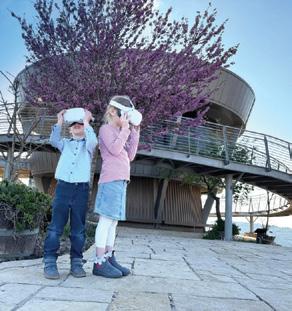
18:00

Hats are one of those things you really shouldn’t buy online because, like fingerprints, no two heads are exactly the same. You might be a size Small in a Stetson hat and a Size medium in a Borsalino hat, or an inbetween size in Kangol. In our store we can make any hat fit. Perfectly.
You finally found the perfect Yom Tov hat but it’s a tad too small? We’ll make it larger, a perfect fit. Too big? We’ll make it smaller, a perfect fit.
Yes, we have an online site, and if you can’t get to our store certainly buy on our Website. But if you want your hat to fit just right come to SherlockS Hats, the #1 hat store in Israel. (IF POSSIBLE)
“I
Dorot Rishonim 3 • Tel: 02 563-7155 • www.SherlockSHats.com
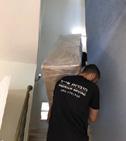













Thursday, 19th of Nissan 5785 | April 17, 2025


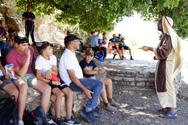




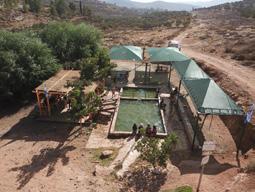





Merkaz Moreshet Elon Moreh The story of the early days of settlement in Samaria Guided tours, videos, escape rooms, and creative art workshops, Activity Hours: 1 1:00 AM - 4:00 PM
K abir Winery Visitors’ center and a kosher-for-Pesach restaurant
Elon Moreh ATVs An exciting off- road experience!-0515701717
Nature & Heritage Ein Kfir Spring, Benyo Lookout , agricultural farms, and plenty of nature and tradition
Har K abir Nature Reserve Street performer and guided tour of the northern Samaria l andscape, in coll aboration with the Gush Katif and Northern Samaria Heritage Center

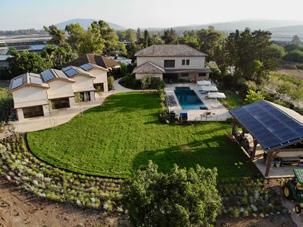





At the start of every Seder, we open the Haggadah with a powerful declaration: “Kol dichfin yeitei v’yeichol” — “Let all who are hungry come and eat.” It’s a call to action, an invitation to the world: no one should be left out, no one should go without.
Traditionally, this line refers to physical hunger. But there is another kind of hunger, one that isn’t always visible: the hunger for connection, for belonging, for love. It’s the quiet ache of the single person who walks into the room alone. The one who has a seat at the table, but not yet a seat across from someone to build a life with.
In the spirit of Kol dichfin, we must expand our invitation. Who do we know who still hasn’t found their person? Who do we see in our communities, in our families, in our circles of friends, who could use our help to find the right one?
It’s not enough to feel bad or to wish them well. This phrase from the Haggadah is not passive—it’s active. It’s a call to take responsibility. To pick up the phone. To make the introduction. To say, “Hey, I’ve been thinking of you—I might have someone in mind.”
You don’t have to be a professional matchmaker to make a match. You just have to care enough to try.
Sometimes we assume someone else will do it. Or that it’s not our place. Or that we don’t know enough. But if not us, then who? If not now, then when?
Everyone deserves a seat—not only at the Seder table, but at the table of life, partnership, and building a home. The loneliness of singles isn’t just their burden—it’s ours, too. And the mitzvah of matchmaking is one of the greatest acts of chesed we can do.
This Pesach, as you open your Haggadah and say Kol dichfin yeitei v’yeichol, let it mean more than just an open door. Let it be a reminder: each of us has a role in helping others find their place, their person, their home.
Let’s make sure no one is left standing.




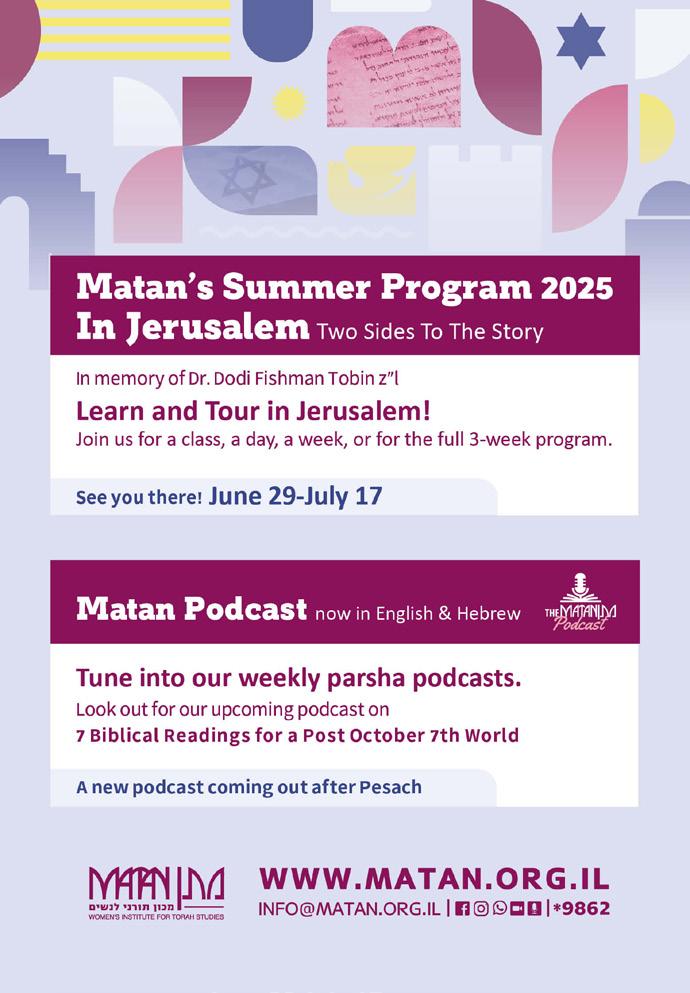
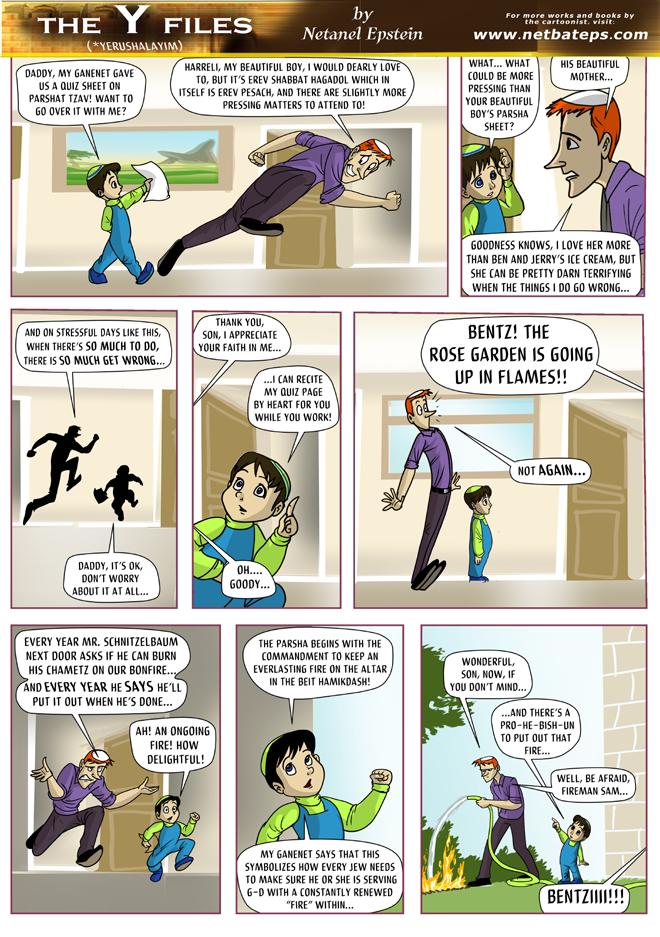
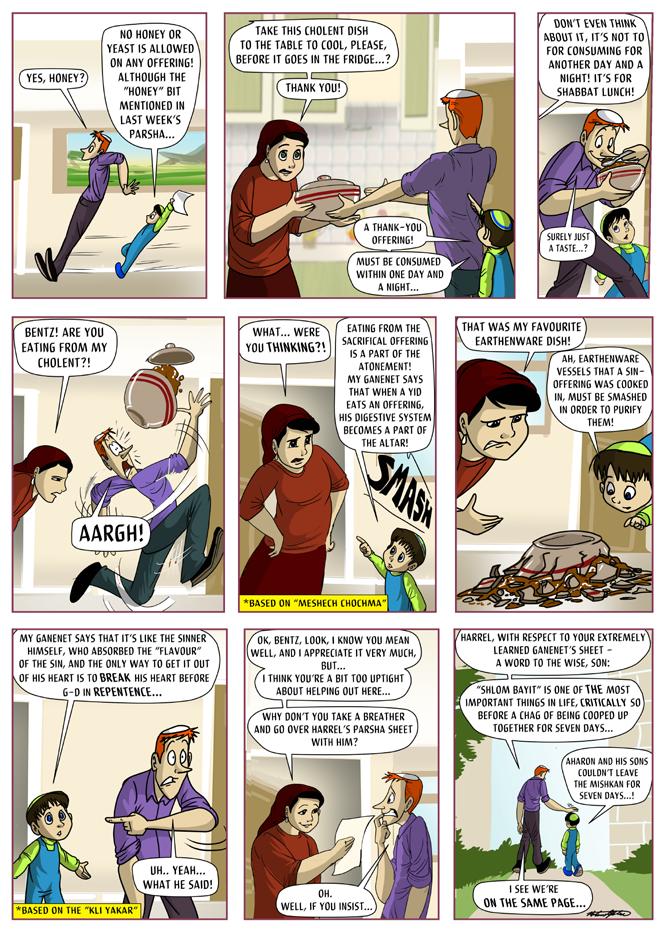


RABBI MICHAEL KAHN EXECUTIVE DIRECTOR, NCSY ISRAEL

RABBI YOSEF GINSBERG REGIONAL DIRECTOR, NCSY ISRAEL
As we gather around the Seder table, we are reminded that Pesach is not merely a commemoration of our past but a powerful call to action for our future. The Exodus from Egypt was not just about leaving slavery behind; it was about forging a new identity as Hashem’s chosen nation, embracing Torah, and striving for spiritual greatness. And let’s be honest—who among us doesn’t need a little help breaking free from our own personal Mitzrayims? Whether it’s our smartphones, our snooze buttons, or our post-chametz withdrawal, we all have our own Egypt to escape!
The Baal Shem Tov teaches that Pesach is a time of renewal, a moment when we can leap—like the very word ‘Pesach’ implies— beyond our perceived limitations. The Sfas Emes adds that just as Hashem took us out of Egypt with an outpouring of divine love, so too, in every generation, Hashem gives us the strength to break through our own barriers and reach new spiritual heights. And if you’ve ever tried to make it through a three-hour Seder without sneaking a bite of matzah early, you know all about self-control and perseverance!
Rav Avraham Yitzchak HaKohen Kook explains that Yetziat Mitzrayim was not merely
a historical redemption but the beginning of an ongoing process of geulah, a spiritual and national awakening that culminates in the full realization of Am Yisrael’s potential in Eretz Yisrael. Rav Kook teaches that just as the Jewish people left Mitzrayim with divine miracles, so too, each generation must embrace the responsibility to continue the redemption through deepening our connection to Torah, mitzvot, and the rebuilding of our nation. Pesach reminds us that we are not just retelling an old story—we are living it, writing the next chapter with every act of faith, every mitzvah, and every moment of Jewish pride.
At NCSY Israel, we see this very process unfolding before our eyes. This past year has been a time of remarkable growth. Our Shabbatons, Chapter programming, and weekly learning initiatives have inspired more teens than ever to embrace their Jewish identity with passion and commitment. From inspiring getaways around the country to deep and meaningful chavrutot, we have seen firsthand the power of a spark ignited. The flame of Torah is burning brightly in the hearts of our NCSYers, and their thirst for authentic Jewish experiences has never been stronger. We are not just educating; we
are cultivating the next generation of Torah leaders, Zionists, and proud Bnei Yisrael who will shape the destiny of our nation.
None of this would be possible without our dedicated staff, madrichim, educators, and of course, our incredible supporters—our partners in this holy work. Just as every individual had a role Yetziat Mitzrayim, every one of you has played a role in the redemption of Jewish souls. But the journey is far from over. As we continue to grow and expand our impact, we invite you—parents, community members, and lovers of Am Yisrael—to take part in this sacred mission. Whether through learning, mentoring, or supporting our programs, each of us has the power to contribute to the unfolding story of geulah in our time.
And what better way to start than by giving back? Just like we encourage our teens to stretch beyond their limits, we invite you to do the same. Open your home for a Shabbat meal, sponsor a learning session, or simply give a warm smile to the next generation. Every action counts. Let’s make this Pesach not just about telling the story of redemption—but living it.
As we open our Haggadot and declare, “B’chol dor v’dor chayav adam lirot et atzmo k’ilu hu yatza mimitzrayim”—”In every generation, one must see himself as if he personally left Egypt”—let us all take this to heart. May this Pesach be a time of true personal and communal redemption, of breaking free from constraints, and of stepping boldly into the future with emunah, passion, and purpose.
Chag Kasher V’Sameach!

Netanya: Close To Ir YamimSelect 2, 3, 4, Bedroom Apartments Completing Jun 27
Great Pricing with NO INDEX + ONLY 10% At Closing
Builder Offering 1M NIS mortgage - 20 years - 2.49%
Balance + 1st mortgage payment at Keys
Jerusalem : New Projects - Pre Sale
ARNONA
MEKOR CHAIM
RAMAT SHERET
TALPIOT
Haifa : New Project - Close To Beach / Sea
New - 2 Bedrooms - Starting From 2.2M NIS
New - 3 Bedrooms - Starting From 2.64M NIS
New - 4 Bedrooms - Starting From 3.003M NIS
Efrat : NEW LUXURY VILLAS - Completing 2027
Ramat Poleg : Next to Ir Yamim
3 Bedrooms 3 Bathrooms, Great Sea View, 6th floor
Shabbat Elevator , 100sqm - 4.03M NIS
Tel Aviv : NEW
Yarkon Park - 2 Bedrooms From 4.99M NIS
NO ONE TAKES


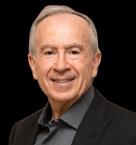

-

Ivalueundergoingpotentiallypainfultreatmentsiftheyhave thepotentialofprolongingmylife—eveniftheywillnotcuremy underlyingillnessandmayleadtosignificantdiscomfort:
Ivalueundergoingpotentiallypainfultreatmentstotryprolonging mylifetowardthegoalofparticipatinginaspecificoccasion(likea familywedding,bar/batmitzvah,orbirth),eveniftheywillnotcure myunderlyingillnessandmayleadtosignificantdiscomfort:
Itismymedicalteam’sresponsibilitytotrytobalancepainrelief withmaintainingmyalertness.Whenitisdifficulttomaintain both,Iwouldpreferforthemtoprioritize:(markone)
Ivalueundergoingahigh-riskprocedurethatmightshorten orjeopardizemylifeifitcould Possiblycuremyunderlyingillness:
Ivalueundergoingahigh-riskprocedurethatmightshorten orjeopardizemylifeifitcould Possiblystabilizemyconditionbutnotcuremyunderlyingillness:
Ivalueundergoingahigh-riskprocedurethatmightshorten orjeopardizemylifeifitcould Possiblyextendmylifebyanyamountoftime(afewdaysor weeks)butnotcuremyunderlyingillness:

